
magazine
Issue 33. Summer 2024
The
of Christopher Ward.


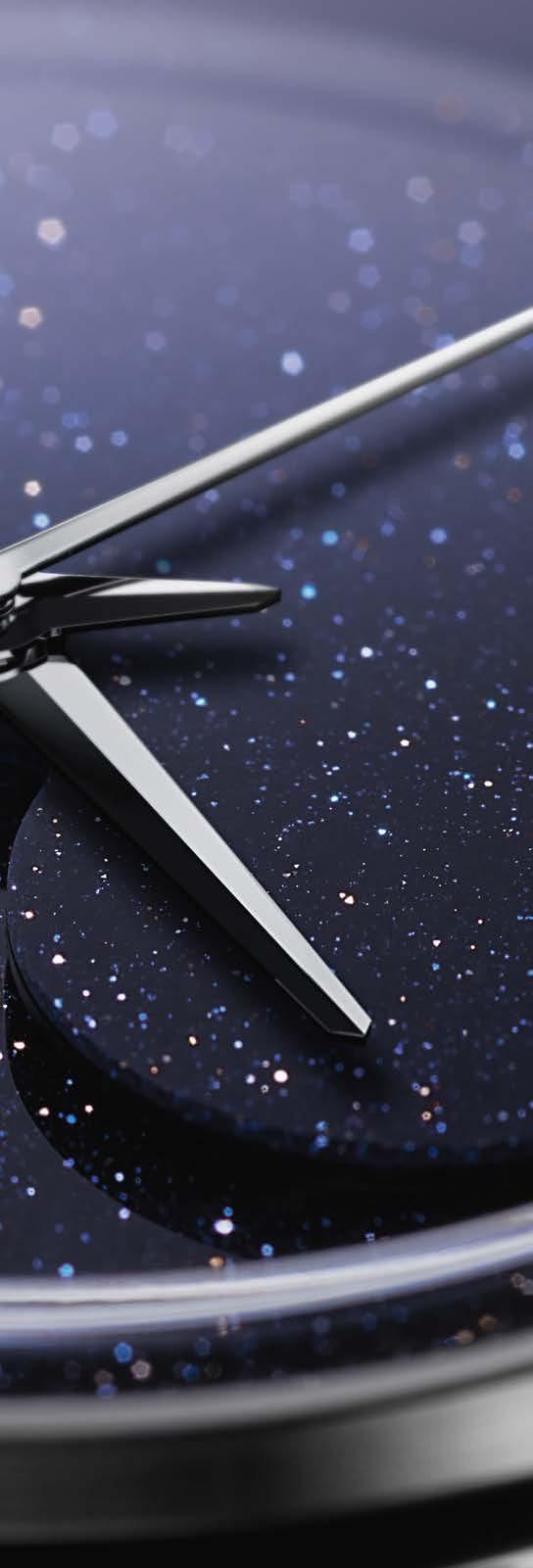
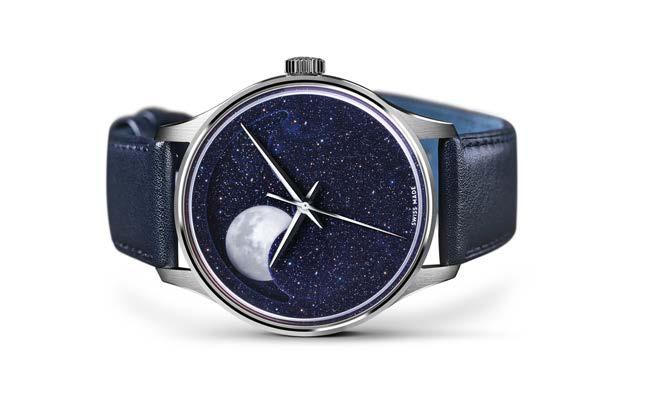
The extraordinary new C1 Moonphase from Christopher Ward. A watch that tracks the moon for 128 years – without missing a beat. With an aventurine glass dial infused with copper oxide to represent the night sky. And a 3D ‘moon’ sculpted from Globolight© – a luminous ceramic – that precisely follows the real moon’s journey across the sky. A watch this advanced can cost up to £45,000. But the C1 Moonphase starts from less than £2,000. As someone once said, you don’t have to be mad to work here… Do your research.

christopherward.com Perpetual lunacy
Loupe.
The magazine of Christopher Ward.
The thinking behind Loupe is simple: to create a magazine readers can’t wait to open when it lands on their mat. And we’re confident that’ll be the case with this issue.
Much of that is due to the unmistakable Twelve X. To find out the lengths our team went to create this unique watch, read the feature on page 12.
As CW celebrates its 20th anniversary, we hear from co-founders Peter Ellis and Mike France to reflect on two decades of watchmaking and where the company is going next. Go to page 28 for more.
Another person with a vision for the future is Everton manager Sean Dyche, which is why we brought him together with Mike France to discuss management and leadership on page 32.
There’s much more to discover, but we’ll leave that to you.
Enjoy the magazine!
Editor: Anthony Teasdale
Art Director: Jamie Gallagher

Who’d have thought it?
In May 2004, the two of us, plus Chris Ward, took a slow boat down the Thames. With the sale of the educational toy business Early Learning Centre only a month behind us, the notion of starting a watch company to take on the mighty Swiss seemed like a brave (alright, a daft) one.
Twenty years later, it would be wrong to believe that we had a clear plan for what has turned out to be an incredible journey into the world of watchmaking. We didn’t.
What we did have, though, was a belief that the often self-satisfied and overpriced nature of the ‘luxury’ watch industry was ripe for something different.
Whether we’ve delivered on our mission is for others to say, but we remain as excited about Christopher Ward today as we were in May 2004. So, here’s to the next 20 years!
Mike & Peter
4
12 — 21: Peter Canning
14 / 17: Remco Merbis 1 Park St, Maidenhead, Berkshire SL6 1SL christopherward.com
Designer: Sam Burn Photography
Photography
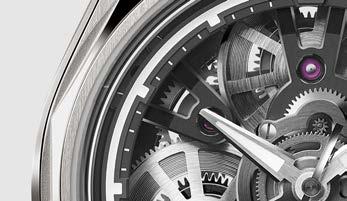


5 Contents Features 12 – 21 Industrial evolution The inside story of The Twelve X 22 – 27 Sunny delight Gorgeous photos of Britain in summer 28 – 31 History boys Mike France and Peter Ellis reflect on 20 years of Christopher Ward Regulars 6 – 10 The Brief Latest news from Christopher Ward and the world of watches 11 Drawing board Our most popular watch meets our in-house movement 44 – 45 O-pinion Dennis Stock’s photos; Beethoven’s Ode to Joy; painter John Singer Sargent 46 – 49 Insight Ken Kessler on how mechanical watchmaking overcame the ‘Quartz Crisis’ 50 Great watchwearers Warren Buffett 32 – 35 Sean’s inner steel Find out what drives Everton boss, Sean Dyche 36 – 39 Union tick Laura McCreddie-Doak examines the UK watch industry 40 – 43 A different Calibre A history of our in-house Calibre SH21 movement Sean's inner steel 32 — 35 Industrial evolution 12 — 21 A different Calibre 40 — 43
Christopher Ward releases a new quartz chronograph that pays tribute to all three of the UK’s Armed Forces – the Army, Royal Navy and Royal Air Force…
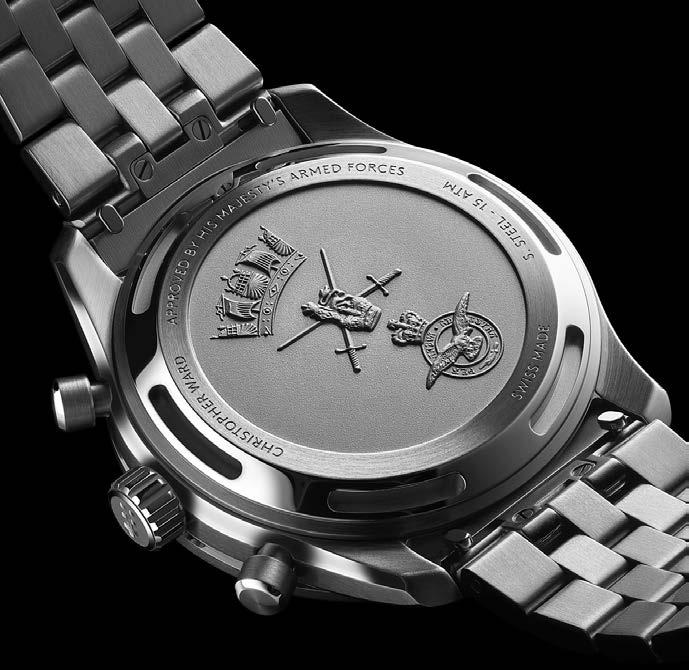

The new C63 Valour is powered by a thermo-compensated quartz movement that’s accurate to +/- 10 seconds per year, while the ‘reverse panda’ dial recalls the sports chronographs of the 1960s. And in a subtle but meaningful nod to the bravery of the Armed Forces, the hands of the subdials are matched to the colour of each Service.
Turn the watch over, and you’ll see the insignia of the three Services have been deep-stamped into the case, while each heraldic badge features the ‘Queen’s crown’ – a mark of reverence to Queen Elizabeth II.
The C63 Valour is available on both the military-style Webbing strap, the sporty Bader bracelet or Consort™ – the company’s most jewellery-like bracelet.
Available now from £550 | $625 | €675
Latest news from Christopher Ward and the wider world of watches

Meet CW’s man in the USA!
Christopher Ward has appointed Mike Pearson as its brand director in the USA. Mike, originally from Nuneaton in the English Midlands, helped grow Zodiac in America and aims to make CW an even more recognised name in the States.
Over the last few months, he’s hosted watch appreciation nights in Austin, Houston and Dallas, where he lives, but will be looking to meet CW fans around the US. “I get in touch with watch clubs in areas where we’re not well known to arrange events. That way we can open the brand up to those who don’t know us.”
The District Time Watch Show in Washington DC was a recent success, where Mike hosted a CW stand. “When I arrived they said, ‘CW is the superstar in the room’ which was nice to hear. I also drove out to
Virginia where I met enthusiasts from CP
Time – a club with an inclusive philosophy aimed at collectors who might not feel comfortable in a regular watch club.”
With his diary filling up, the message is getting through. “As someone said when I showed them a Bel Canto: ‘Wow, the hype is real!’”
If you’d like to contact Mike Pearson about an event, follow him on Instagram @mikepearson6

The latest news from our Swiss HQ
The first part of 2024 has been super-busy! Our primary focus is ensuring everything is ready for The Twelve X. With a release of this significance, it’s vital the whole process runs smoothly come launch day. The intense work we’ve been doing since Christmas will make sure that’s the case.
The expansion of our staff is another sign of Christopher Ward’s success – and we’re making significant additions to the team, including a new head of purchasing who previously worked for a major brand in La Chaux-de-Fonds.
Appointments like this have been made possible by the C1 Bel Canto winning the Petit Aiguille category at the GPHG awards in November. It’s put Christopher Ward on the map – and because it attracts top watchmaking talent – will enable us to make even better watches in the years to come.
Jörg Bader Jr, Head of Product
Letter from Biel
7
The UK’s top watch brands came together for British Watchmakers’ Day, with CW leading the charge
There could be no greater proof of the resurgence in UK watchmaking than British Watchmakers’ Day on March 9th. And Christopher Ward was at the heart of the action.
CW joined 43 other members of The Alliance of British Watch and Clock Makers and 1,200 guests to celebrate UK horology at the Lindley Hall, London
“Our presence was met with overwhelming enthusiasm, as you could tell by the crowds at our stand,” says Peter Ellis, CW co-founder. “It was incredible to meet so many longtime customers, but also to say hello to those handling a CW watch for the first time.”
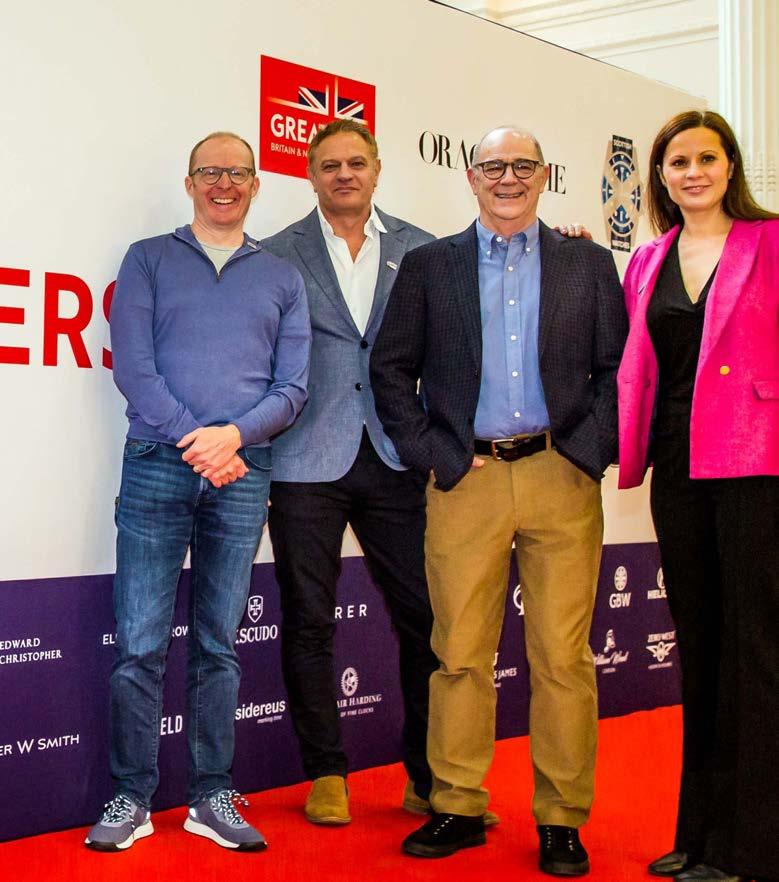
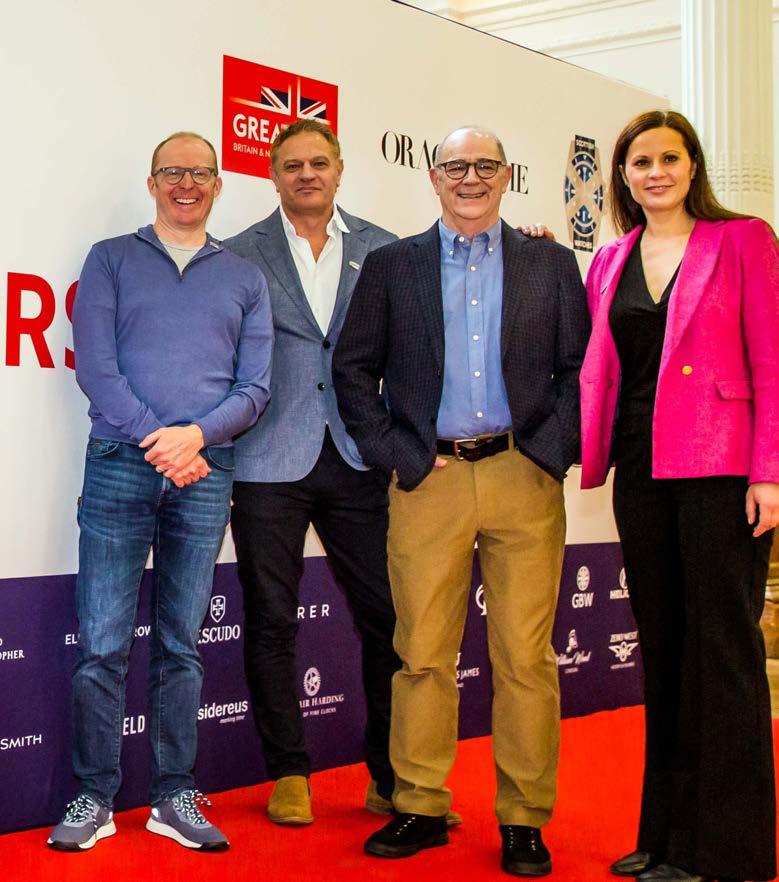
Along with 18 other brands, CW created a set of unique watches exclusively available to purchase via a raffle on the day. The C1 Bel Canto 9324 garnered significant attention with over 400 people signing up for the chance to buy one.
All profits from the sale, totalling over £24,000, were donated directly to The Alliance, assisting it in its work to champion British watchmaking, and offering opportunities and support for new watchmakers.
Meanwhile, Alliance chairman Roger W. Smith made an exquisite Series One watch for the show – again with a donation from the proceeds going to the organisation.
Following the event, Christopher Ward hosted 14 watch journalists, YouTubers and bloggers for a preview dinner where the company showcased The Twelve X. “I’m pleased to say the watch went down tremendously well,” says CW CEO Mike France. “And I think it’s going to be just as popular with our customers!”
8
L-R - Roger W Smith, Alastair Audsley, Mike France, Katya Audsley
“It was incredible to meet so many longtime customers, but also to say hello to those handling a CW watch for the first time”
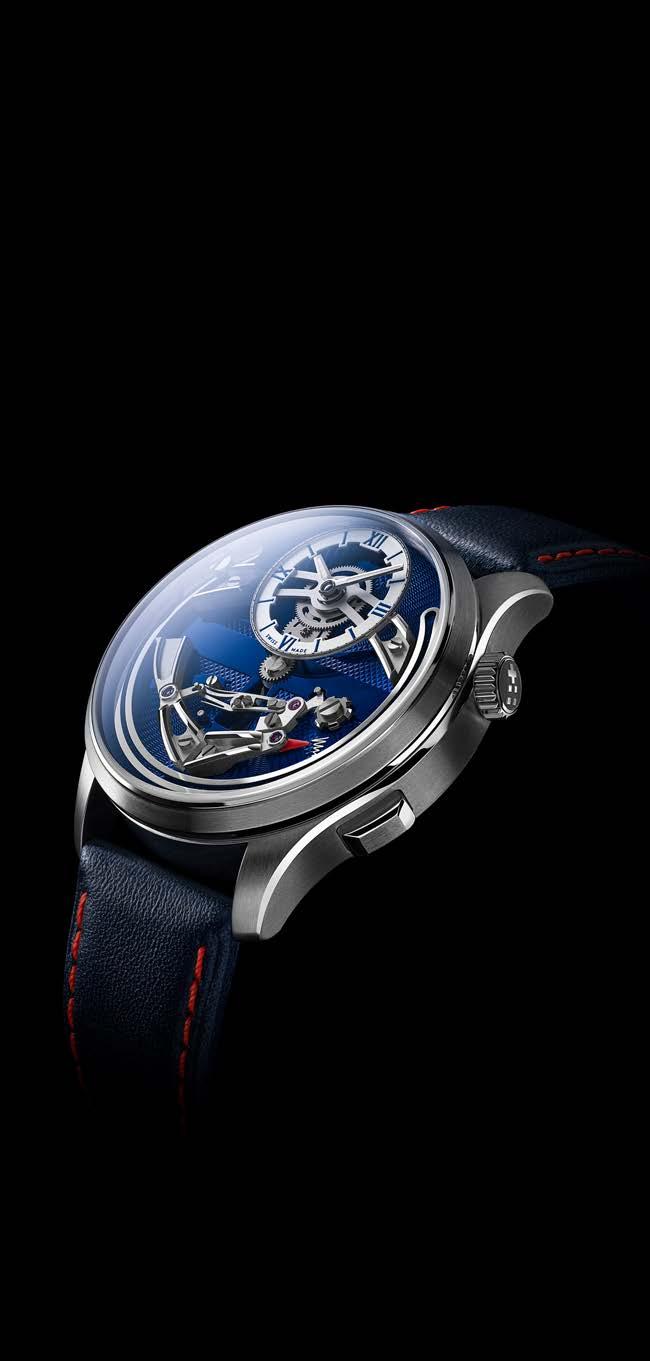
Jo gets her just reward
The UK Post Office scandal, which saw 550 sub-postmasters falsely accused and convicted of financial discrepancies because of faulty accounting software, has touched a nerve with the British public. How the sub-postmasters fought to clear their names after one of the worst miscarriages of justice in British history has inspired Christopher Ward.
So when sub-postmaster and campaigner Jo Hamilton accompanied her husband David to the CW showroom, the company felt it was only right to show its respect.
“I’d bought David a steel Twelve,” says Jo. “But when I was given some of the money taken from me, we decided to swap it for the titanium version. We arranged a visit to the showroom in January, and Mike France came to meet us. He then gifted us a Twelve (Ti) each – David has the 40mm, while I’ve got a 36mm in Lagoon Blue. I’ve not worn a watch in years, but I never take it off!”
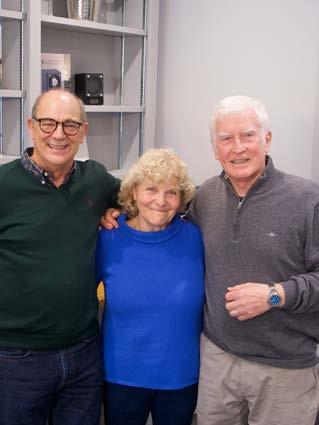
9

CW fan Jas works with our Bespoke team to create four incredible timepieces
It’s hard to improve on perfection –especially regarding Christopher Ward watches. But CW fan and supercar enthusiast Jas from the @mclaren_mso_1 channel on Instagram, comes close, thanks to the timepieces he creates with CW’s Bespoke department.
As with all our Bespoke watches, Jas uses a CW model as a template, then lets his imagination run wild, bringing in new colours, mottos and engravings. So far, he’s created three fantastic models, and is currently working on a fourth.
“Three years ago, I was bespoking a McLaren and wanted a watch that paid tribute to it, so with the help of CW’s Bespoke department, I created the ‘765LT Owner’s Edition’ for 30 people, using the C60 Trident GMT as a foundation,” he says.
The experience – described by Jas as “seamless” – was so good he created a second watch, the C1 Bel Canto ‘Phoenix’, also inspired by the McLaren, which boasts a vivid ‘Volcano Orange’ platine. There’s also a black ‘beak’ and ‘squiggle’ that reference the car’s carbon fibre elements, plus a bespoke case back and strap.
His third watch is the ‘VULCAN XII’, a remix of The Twelve – named after the Roman god of fire – created for members of his supercar club, though a few horology enthusiasts were fortunate enough to be allocated one, too. It sold out in less than a day.
For Jas, a CW fan since the company started, bringing his creative ideas to a watch he’s already in love with is incredibly rewarding. He spends months experiment-

ing with colour, finishes and combinations before he’s happy.
“I like the ability to realise and create my vision for specific watch designs that don’t exist,” he says. “I also love the high quality and value that CW watches offer.”
And with more watches in the pipeline, including a new ‘Jade Dragon’, you’ll be seeing a lot more of his work in the near future.
Follow Jas on Instagram @mclaren_mso_1
Interested in creating your own custom CW?
Contact bespoke@christopherward.co.uk
10
Release: 2025

It’s 10 years since the launch of CW's Calibre SH21.
And yet, it continues to inspire Christopher Ward’s designers and engineers to create even more ambitious watches – one of which will pair SH21 with CW’s most popular complication.
“What we’re planning with this new watch hasn’t been done before,” says designer William Brackfield. “I can’t go into too much detail, but this version of our bestselling ‘EveryWatch™’ will feature a 40.5mm case, which is as small as we can go with SH21.”
The watch will bring high-end polishing and finishing to a genre that hasn’t appeared in the SH21 range so far. Then there’s a multi-level dial that’s going to make people very excited.
“We’ve designed the dial so you’ll not only be able to see Calibre SH21 from the front but also some of the additional elements for the complication,” says William.
The details haven’t been finalised but there’s likely to be a glass box crystal on the front and the back, plus a redesigned rotor which you’ll be able to view through the rear crystal.
“I’m not at liberty to tell you more,” says William. “But we’re all excited about this twist on our most-loved complication – and the expansion of SH21 into a Collection it’s never been in before.”
11 Things to come

The Twelve X
INDUSTRIAL EVOLUTION
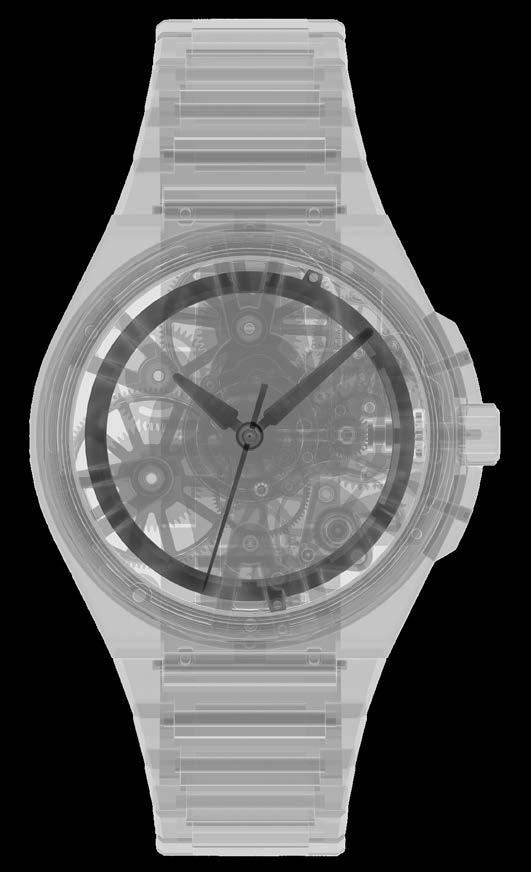
13
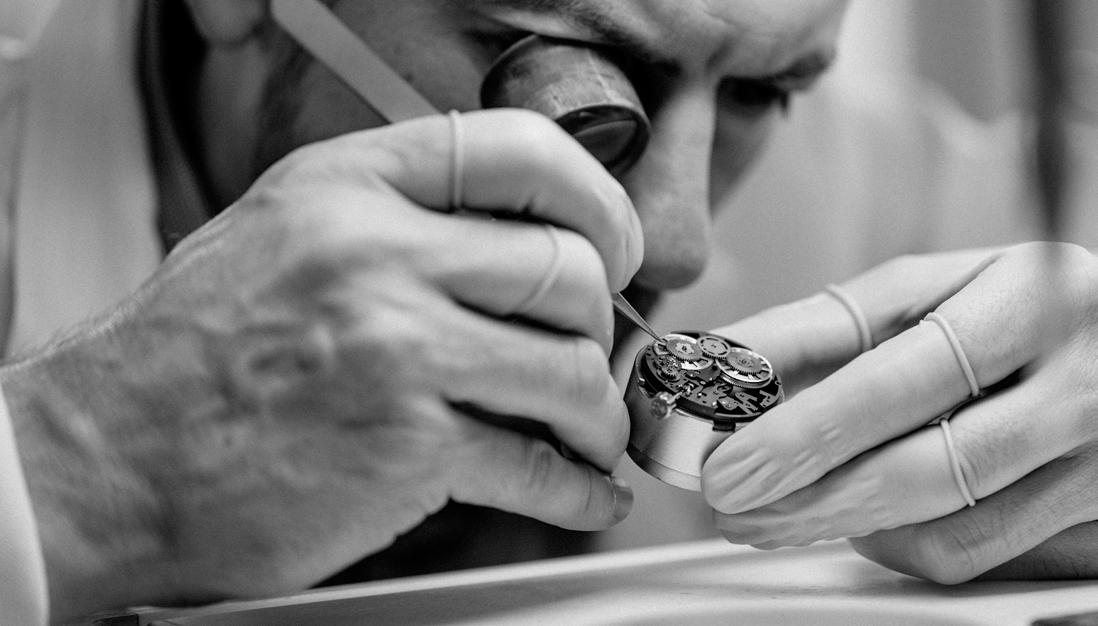
For the 10th anniversary of Calibre SH21 – and the 20th of Christopher Ward – comes The Twelve X, the pinnacle of The Twelve Collection and a showcase for the misunderstood glories of machine finishing
Words: Matt Bielby
14
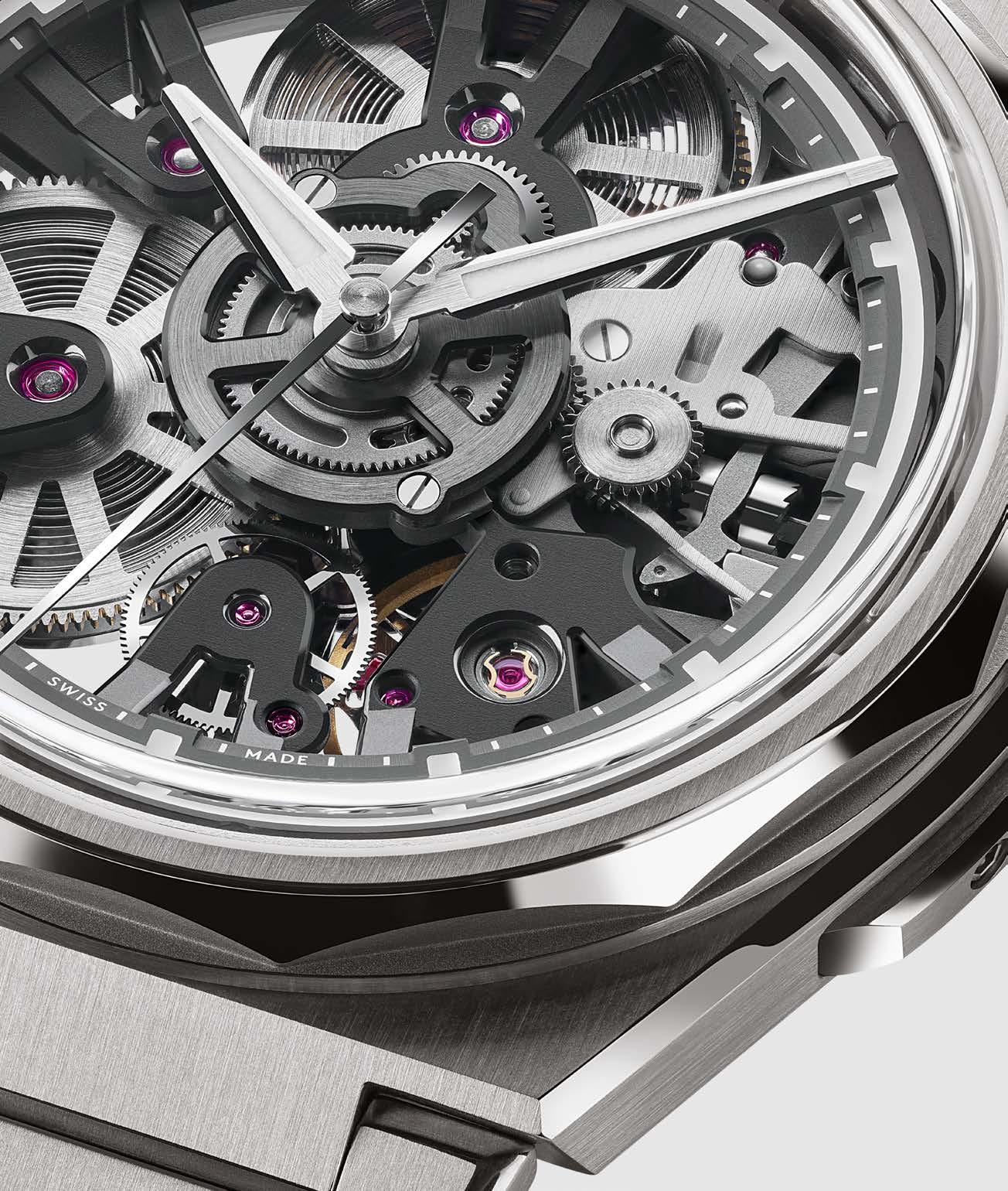
The watch industry has long been awash with myths: one of the hardiest being that the best watches are entirely hand-made.
Of course, the skilled hands of a watchmaker will be involved somewhere down the line, but to believe everything is hand-constructed is to ignore the ranks of CNC machines at every atelier, and asks you to believe that a factory-made Porsche is inferior to a kit car.
Of course, Christopher Ward has generated some myths of its own. Myth #1: that it’s barely out of nappies. Sure, by some standards it’s a virtual foetus, but 20 years in the game – Christopher Ward was founded in 2004 – is nothing to be sniffed at. Myth #2: that it only started to be truly ambitious recently. In fact, the inhouse SH21 movement is now 10 years old, and the first JJ Calibres – modules adding bespoke functions to existing movements, such as a moonphase or a single-pusher chronograph – are more established yet.
Two great anniversaries then, and the watch Christopher Ward has created to celebrate both is rather special. The Twelve X is the peak iteration of the company’s most recent hit, the integrated-bracelet Twelve, and the latest addition to an impressive range of high-end pieces: think Apex, Concept, and, of course, Bel Canto.
These are watches priced in the low thousands, while still offering incredible value for money. Everything at CW dances to the tune of the same philosophy – that a piece should never be sold for more than three times the cost of manufacture – and the radical implications of this become more apparent as you push upmarket.
At £1,000, Christopher Ward offers the design, finishing, materials and general quality of a watch typically seen at twice the price. But in the £3,000-4,000 ballpark the contrast becomes even more stark, and it doesn’t take long to find watches from storied makers that offer the exact same qualities as The Twelve X for five or even 10 times the price.
The Twelve X is the first Twelve to be powered by SH21, the first to feature both Grade 5 and Grade 2 titanium in its case, and the first to feature a new micro-adjustable bracelet. It’s also the first to be skeletonised, stripping away the traditional dial to reveal the mechanical movement’s workings from the front of the watch, framed by a rhodium dial ring around the outside with an applied luminous Globolight© wedge at 12 o’clock.
“We’ve removed more material than ever before, exposing parts of the movement that have always previously been hidden,” says company co-founder and CEO Mike France. “And the results are spectacular. We’ve simplified shapes, added more contrast between finishes and colours, and generally punched up the look: this is a bold watch, with a strong, cohesive sense of identity. You can perhaps most easily see this by looking at the rotor on the back, which echoes the triangle shapes of the bridges. But don’t think of this as the concept car that wows them at a motor show; instead, it’s the more refined production model that comes after it.”
One of the great strengths of SH21 is its twin-barrel design, giving an incredible 120 hours of power reserve, so it’s gratifying to be able to show these barrels through the front of the watch: now you
can actually watch the springs wind and unwind, the power being generated and used. Of course, with far less tucked away, each exposed part has to be finished to higher standards than ever: this means, for instance, that many are deliberately made just a fraction of a millimetre too tall, so they can be polished down using custom-made diamond cutters.
“Naturally, this demands the highest quality CNC machines, as any vibration will leave fine wrinkles on the surface,” Mike says. “But get it right, and the results will almost match the most perfect hand polishing.”
That’s right: the company’s being very up front about how much machine polishing The Twelve X employs, and rightly so. This is an open series, designed to be built in high numbers, which makes it the perfect piece to showcase Christopher Ward’s new commitment to machine finishing as entirely appropriate for highend watches. After all, now that the best machines can do the same thing as the human hand, or very nearly, it becomes a brilliant tool to help deliver one of CW’s key missions: making high end watch-making accessible to all.
“One big question, of course, is what is hand-finishing anyway?” asks Jörg Bader Jnr, head of product at Christopher Ward’s atelier in Biel, Switzerland. “If an electrical motor is doing the polishing, but it’s held by a person, is that really different to a machine doing it all? These days, even the most expensive watches aren’t hand crafted the way they once were, and, with this in mind, The Twelve X is designed to push machine finishing like never before.”
16
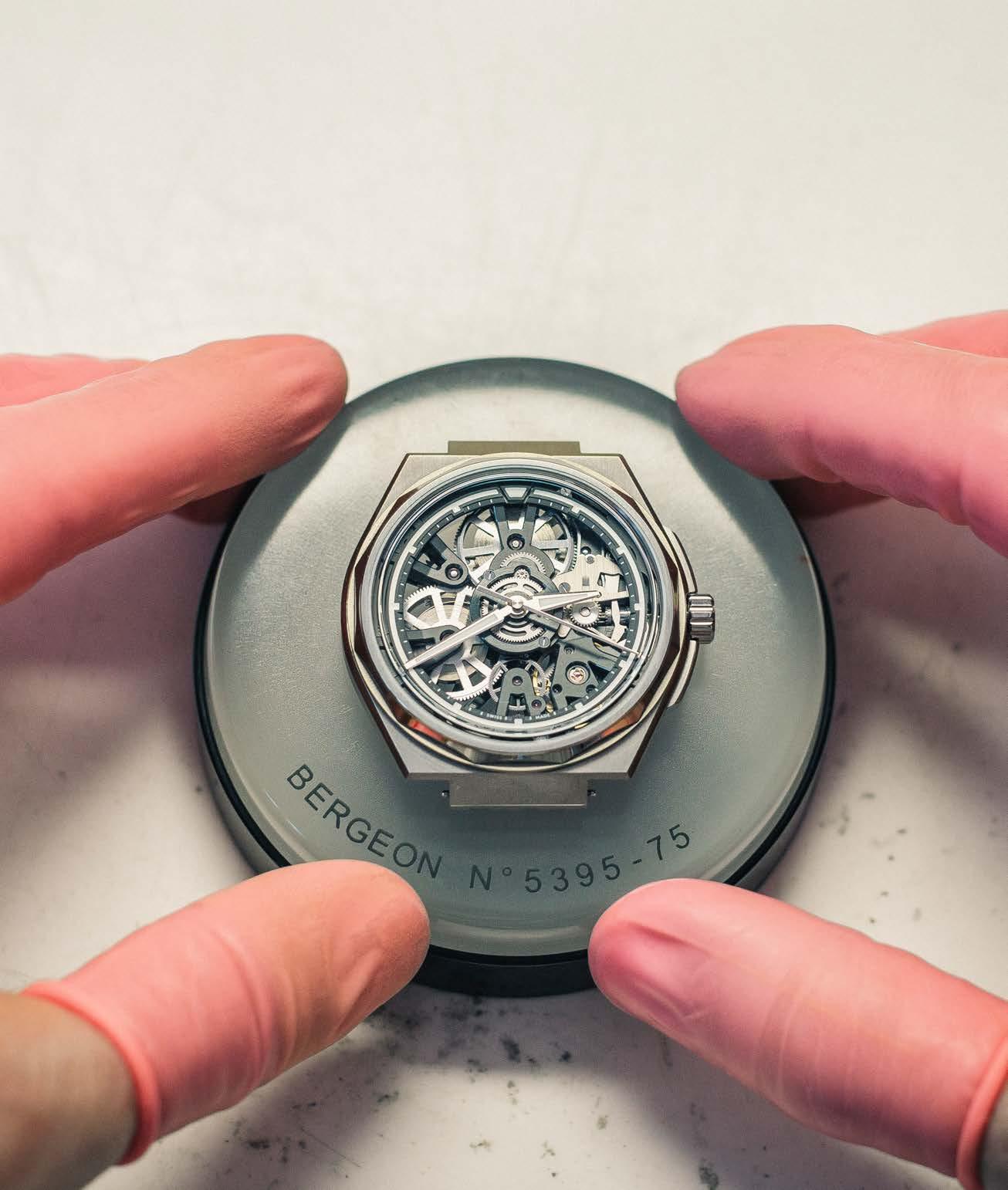
“This is a bold watch, with a strong, cohesive sense of identity”
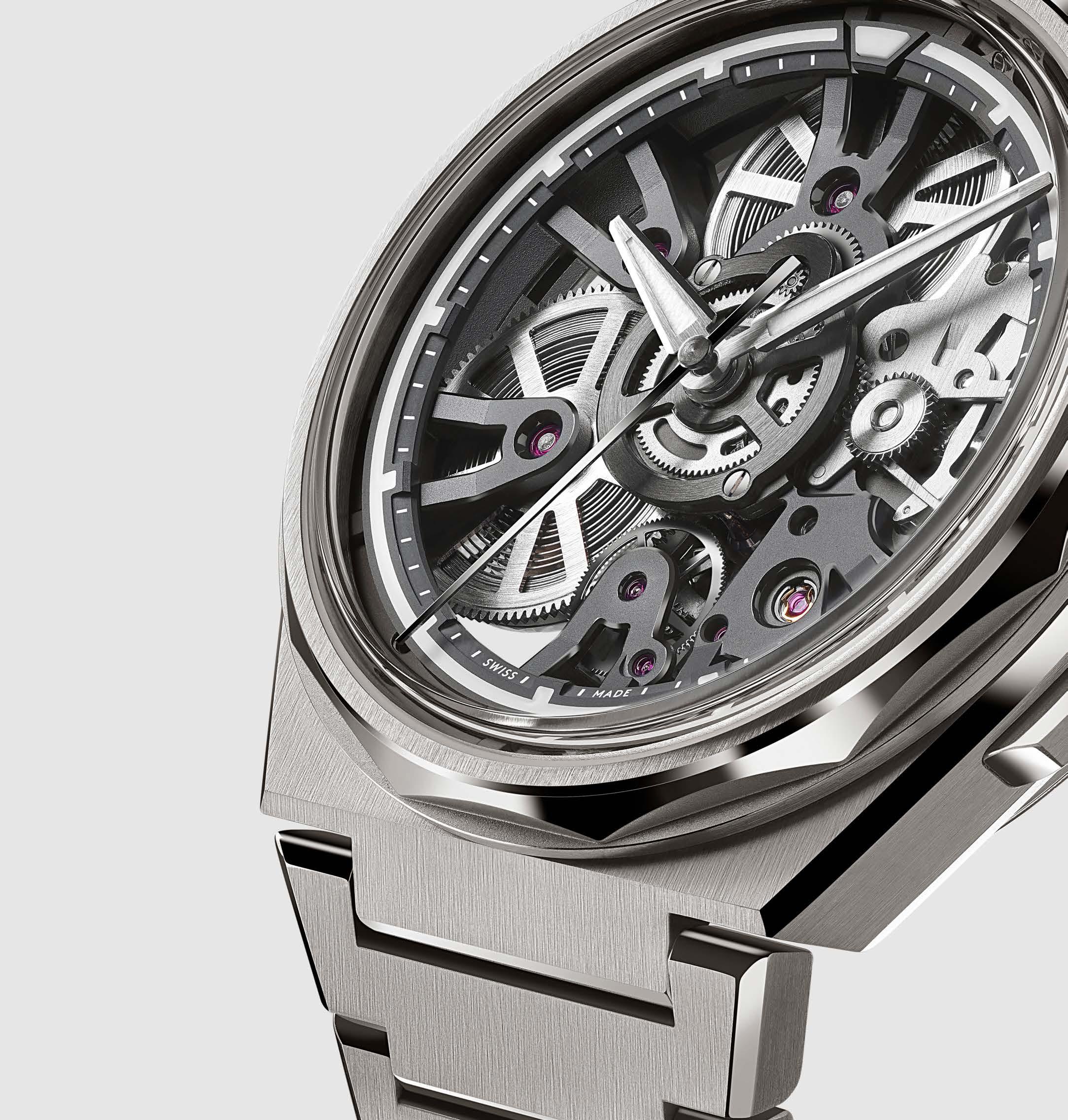

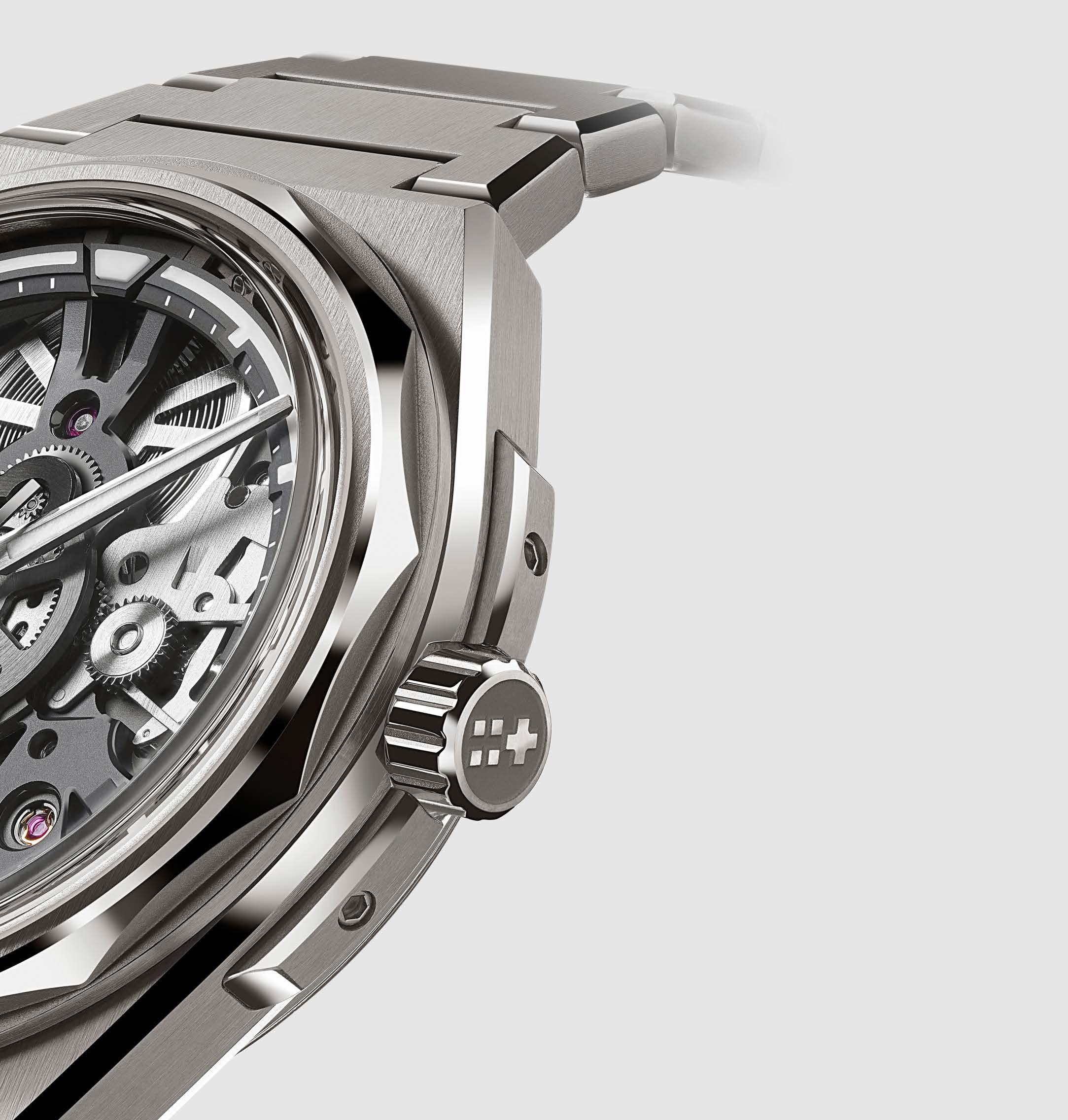
“The Twelve X is designed to push machine finishing like never before”
Most of the really fine finishing revolves around the bridgework: sturdy but delicately shaped triangular shapes that support each part of the movement. The platine features almost free-floating arms, while such critical components as the train bridge, automatic bridge and balance bridge are all made in house.
“With The Twelve X, we’ve been working with exceptional people, and truly state-of-the-art machines, to achieve the best finish possible at this price – and results are gorgeous,” says watch designer William Brackfield. “The challenge for me has been to design pieces that can be made efficiently by machine, while retaining a traditional aesthetic; do that, and it becomes virtually impossible to tell the difference.”
The polished, brushed, and sandblasted case is another triumph. Made of two different types of titanium – the Grade 2 of the regular Twelve (Ti), and the ultra-high quality Grade 5 of the Bel Canto – it conspires to appear tough and elegant both at once. The bulk of the case is Grade 2, with the denser, higher grade material used for the bezel and case back, considered essential there as it’s both more scratch resistant and easier to finish to a high standard.
The Twelve X is also unusual in that it features box crystals at both front and rear. This is, at heart, a comfortable, easy-wearing piece, so shouldn’t stick out too far out from the wrist – not the easiest thing when powered by SH21.
“Being such a robust movement, SH21 can be a problem when paired with a slim watch case,” William says. “Which is why I’m so pleased we got this down to 12.3mm high. We also added the box sapphire case back, to visually mirror the one at the front. This means we needed less metal for the sides, which exposes the movement yet further, bringing it closer to the eyes and making the watch feel like it’s floating on the wrist.”
Although not a test-bed as such, there’s at least one innovation The Twelve X introduces that will appear across the range: a redesigned clasp, this one with the sort of quick-adjustment mechanism that was, until recently, unknown on an integrated bracelet.
“The classic butterfly clasp has one big disadvantage – it has no quick adjustment,” Mike says. “Well, we had to see what we could do about that. So now you can easily adjust the length in seconds – by just 1.5mm on each side, or 3mm in total, but it makes all the difference.”
So that’s The Twelve X. It’s not just about the anniversaries, or bringing SH21 to more people, or about hammering home the Christopher Ward value proposition as never before; it’s also about evangelising the joys of high-end finishing, however it’s achieved. In pure value for money terms, it’s one of the company’s most impressive offerings to date.

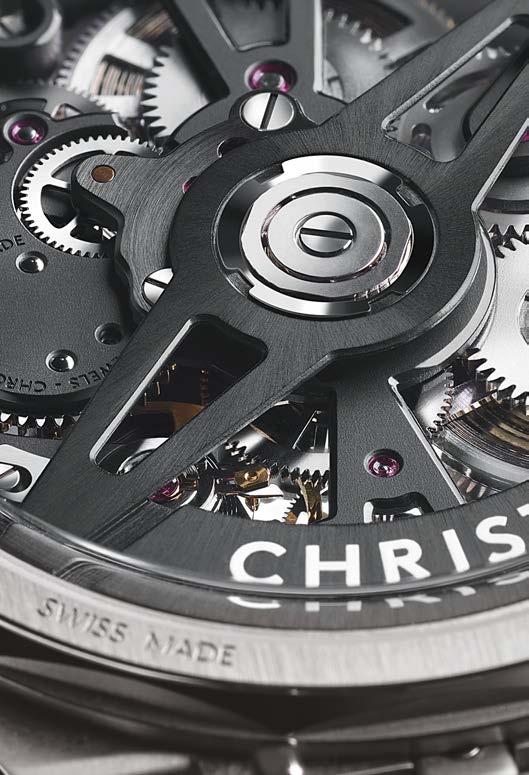
20
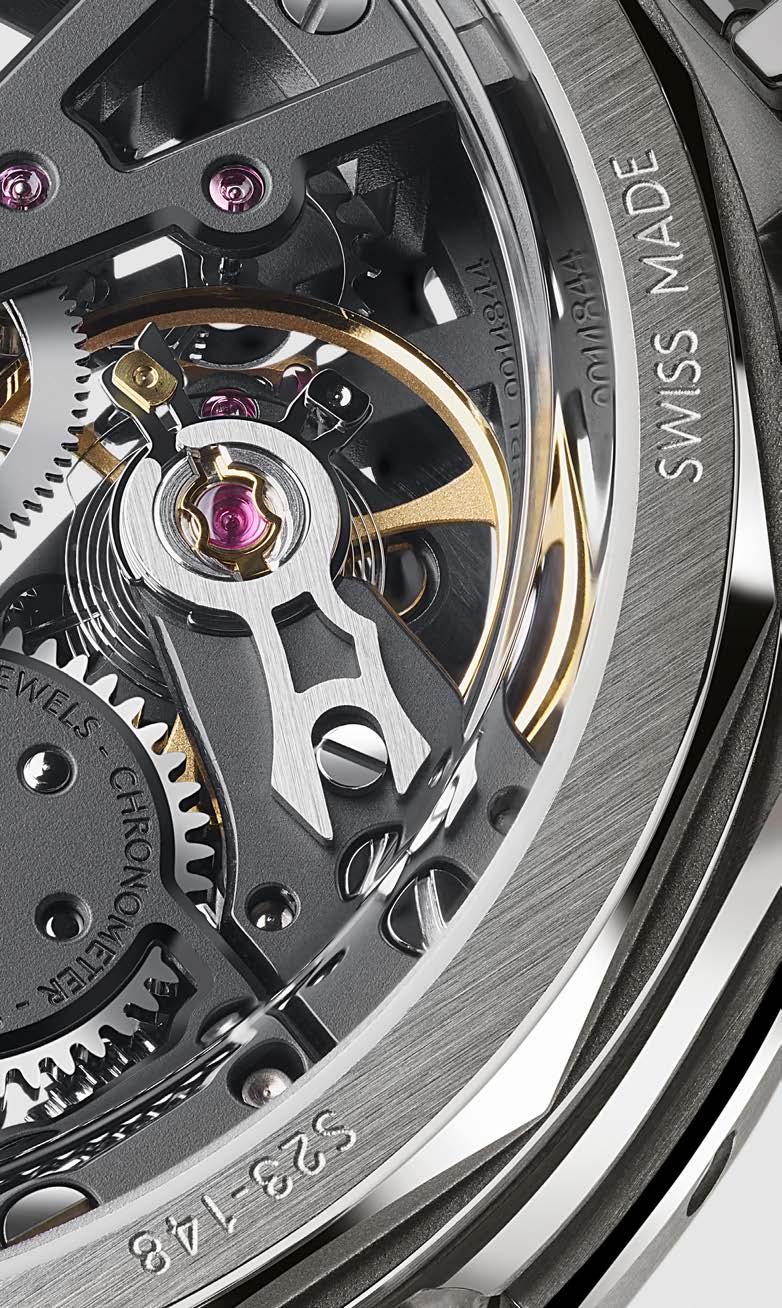


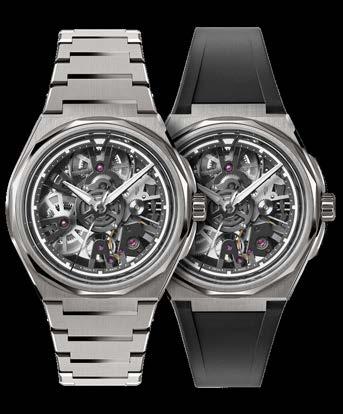
Technical information
Calibre: Calibre SH21 Automatic COSC
Case: Titanium Grade 2 and Grade 5
Diameter: 41mm
Height: 12.30mm
Case weight: 51g
Water resistance: 10 ATM (100m)
Lume: Super-LumiNova® Grade X1 BL C1 and Globolight©
Vibrations: 28,800 p/hr (4Hz)
Timing tolerance: -4/+6 sec p/day
Lug to lug: 46.30mm
Strap width: 25mm
Titanium bracelet – £4,120 | $4,865 | €5,220
Rubber strap – £3,750 | $4,495 | €4,850
Available now
21

D ELIGHT 22 An English Summer
SUNNY
Enjoy the fleeting beauty of an English summer with a set of photographs that bring balmy days by the beach and boating lake to life
The British yearn for summer like no other season. Then, when it arrives, we break out the deckchairs, barbecues and sun hats – and head to the nearest stretch of water, open space or chocolate-box village.
For a population used to spending time indoors, these summer trips to the seaside and stately homes do something to us. We paddle in the water like kids, eat ice cream and pretend to enjoy sunbathing.
Photographer Chanel Irvine spent two years between 2019 and 2021 photographing the British at play in summer. And now her images have been collated in a new book, An English Summer. Here you’ll find artfully washed-out images of candy-coloured beach huts, sun-bleached pubs, bathers splashing about in usually deserted rivers and old ladies taking in the sun by the sea.
The publisher, Hoxton Mini Press, says: “There is a particular magic – and a fragility – to an English summer. During the colder months, we long for lazy, hot days; when they arrive, they feel all too momentary. This exquisite collection of images by Chanel Irvine – taken against the tumultuous backdrop of Brexit and the pandemic –captures the unique, tender mood of a time when so many of us rediscovered the gentle beauty of England’s landscape.” Seems it really did turn out nice again.
An English Summer by Chanel Irvine is out now, published by Hoxton Mini Press, hoxtonminipress.com
23

24


25

26

Previous
page: Hartland Quay, Devon, 2021, Kynance Cove, Cornwall, 2020
27
This page: Columbia Road, London, 2021; Eynsford, Kent, 2019

28
boys
Twenty years of CW
Christopher Ward co-founders Mike France and Peter Ellis talk about 20 years of CW: from the earliest days in a Berkshire chicken shed to a night of triumph in Geneva
In 2004, Mike France, Peter Ellis and Chris Ward started a watch company. A business that launched with a full page advert in The Independent newspaper, and which had more in common with emerging tech brands than the grand watch companies of Geneva.
Twenty years on, Peter and Mike reflect on what two decades in the watchmaking industry has taught them about business, creativity and perseverance. And why the next 20 years are going to be even more exciting.
In November, the C1 Bel Canto won the ‘Petite Aiguille’ category at the GPHG awards – the ‘Oscars’ of watchmaking. How did it feel?
Mike France: I was quite emotional. To say the least!
Peter Ellis: We knew something was happening as Mike was placed nearer the stage than the rest of us.
MF: Also, the watch journalist Nick Foulkes, chair of the GPHG judges, came over to have a chat, which gave me an indication something might be happening. I opened with, “This feels like a big moment,” because it was. Afterwards, the prize-winners and judges had their photo taken on stage. One of the judges was Max Büsser, CEO of MB&F – a watch company that makes incredible ‘horological machines’. He came over to congratulate me, and told me he thought the Bel Canto was brilliant.
Let’s go back to 2004. You’d just sold Early Learning Centre – an ethical toy shop. Why start a watch company?
MF: I loved watches, and we thought online selling was the future. We wanted a challenge, and taking on the behemoths of the Swiss watch industry appealed.
PE: Chris would be in charge, and we’d sprinkle ‘pixie dust’ when needed. But it soon became clear we’d all be involved.
MF: Chris had an office on a farm in Cookham Dean. I spent hours with him going through websites and learning about watches, formulating the business plan.
Who designed the watches?
MF: In the beginning, we worked with Easy Tiger, the design company who we worked with at Early Learning Centre. Adam, the boss, had his studio in his house, with 12-15 designers in the kitchen and conservatory! We liked IWC, so our first mechanical watch, the C5 Malvern Automatic – launched alongside the quartz C3 Malvern Chronograph – was loosely based on the IWC Portofino.
How long did it take for you to realise you were onto something?
MF: Not long. Although sales were slow, they started trickling in from around the world. The first piece of good luck was when a Tasmanian watch expert called Dave Malone bought a C5 Malvern Automatic in order to expose

The original C5 Malvern Automatic
us: he couldn’t believe we were selling a watch with a genuine ETA 2824–1 mechanical movement for £179! When he realised how good the piece was, he wrote about it on the TimeZone forum, which led to us being talked about more than Rolex around Christmas 2005!
PE: We were international from day one. Hans van Hoogstraten, a guy from the Netherlands, launched the forum, while Kip McEwen, from the US, was an early collector.
Did you have any setbacks?
PE: We had a serious one in 2005 at Baselworld before we’d sold a single watch!
MF: We came out of Zurich train station and saw a bar across the road. We sat outside – three of us around a small table – with Chris’s bag by his chair. Somebody pulled up at the lights
29
on a motorbike and took it. We lost the entire business plan! We had to start again.
MF: Then in 2008 there was the biggest financial crash since the 1930s which didn’t help – not to mention the Swatch Group’s decision not to sell any ETA movements to third parties.
What did you do?
PE: At the time we were manufacturing in China, so we had a choice: we could go to Japan for our movements or have our watches made in Switzerland. We felt Swiss expertise was at a higher level so decided to go with them. Something that led to an ‘interesting’ exploration of the country…
MF: Chris hired a Mini, picked Peter and I up at Basel airport and we headed off to watchmaking country to see suppliers. It was pitch-black as we went around hills and mountains, when the car ran out of petrol. What did Chris do? Took the handbrake off, went backwards down the hill and reversed into a still-open petrol station. We saw this as a good omen!
What did you learn from your visits to Switzerland?
MF: That there are about five or six iconic watches, which everything is a riff on. It was clear most of the successful brands were promoting their version of the Rolex Submariner, which led to us producing the first Trident diving watch – designed by me and previous designer, Fraser Palfreyman.
“The GPHG award is about the work of our teams in both Maidenhead and Biel. They’re the future of this company”

PE: We learned not all Swiss manufacturers are the same, and though we found one who had access to ETA movements – he was the world’s largest manufacturer of mechanical braille watches – our quality standards were higher than his. Which led us to discover Synergies Horlogères, which shared our values and had the same desire to disrupt the Swiss watch industry.
In 2014, CW merged with Jörg Bader’s Synergies Horlogères. What did the Swiss arm of the business give you?
MF: Expertise. We amalgamated because we knew their knowledge would enable us to go to the next level. It also gave us access to Johannes Jahnke, the genius watchmaker who invented the ‘JJ’ modules. When we merged in 2014, we also announced the launch of our in-house movement, Calibre SH21, which we’d been working on with Johannes for more than four years. It was a seminal moment.
PE: Today, they’re the supply chain and part of the NPD group – new product development – so Jörg Bader Junior reports to Mike, he works alongside Frank Stelzer and Daniel Kurt in Biel, with designers William Brackfield and Adrian Buchmann.
Tell us about Adrian…
PE: He came here in 2015 as his wife’s parents lived in the UK. He did his research and applied for a job with us. It was obvious that he was an exceptional young watch designer.
MF: From the moment I met him I knew he was someone we needed. We wanted to create a Christopher Ward ‘handwriting’ – and so Adrian started with case design. The Grand Malvern watches were the first to carry the Light-catcher™ case, which were inspired by the Aston Martin DB9.
Chris Ward left in 2019. Do you miss him?
MF: He’s a lovely guy and we miss him as a person – especially the football banter. I’m an Evertonian and after Liverpool’s recent success it might be a bit difficult for me!
PE: He crops up in our conversation all the time. When the right moment appears, it’d be great to see him again.
MF: I don’t miss his driving!
Covid had a big effect on watchmaking. How was it for CW?
PE: Vital, because the best time to lean into a business is when you don’t know what’s going to happen the next day.
MF: We ‘zigged’ when other brands ‘zagged’, connecting with influencers, bloggers and media channels who were all looking for content. We appeared on
30

podcast after podcast, and were probably the loudest company, while the traditional brands went in on themselves. In April 2020, we were one of only two organisations making a new TV advert. The other was the UK government.
Finally, what has 20 years in watchmaking taught you?
MF: If you’re going to succeed, product has to be king. Take the Bel Canto –it’s changed the business completely. All stories come back to product. We have a young team who share our values, and aren’t afraid to challenge each other. I doubt there’s a better team in watchmaking at the moment.
PE: As we said at the time, the GPHG award is about the work of our teams in both Maidenhead and Biel. They’re the future of this company.
MF: It’s taught us to be grateful –and how lucky we are to love what we do. It’s also endlessly interesting, there’s always something new to learn. And we’re just at the start of the journey!
31
SEAN'S INNER STEEL

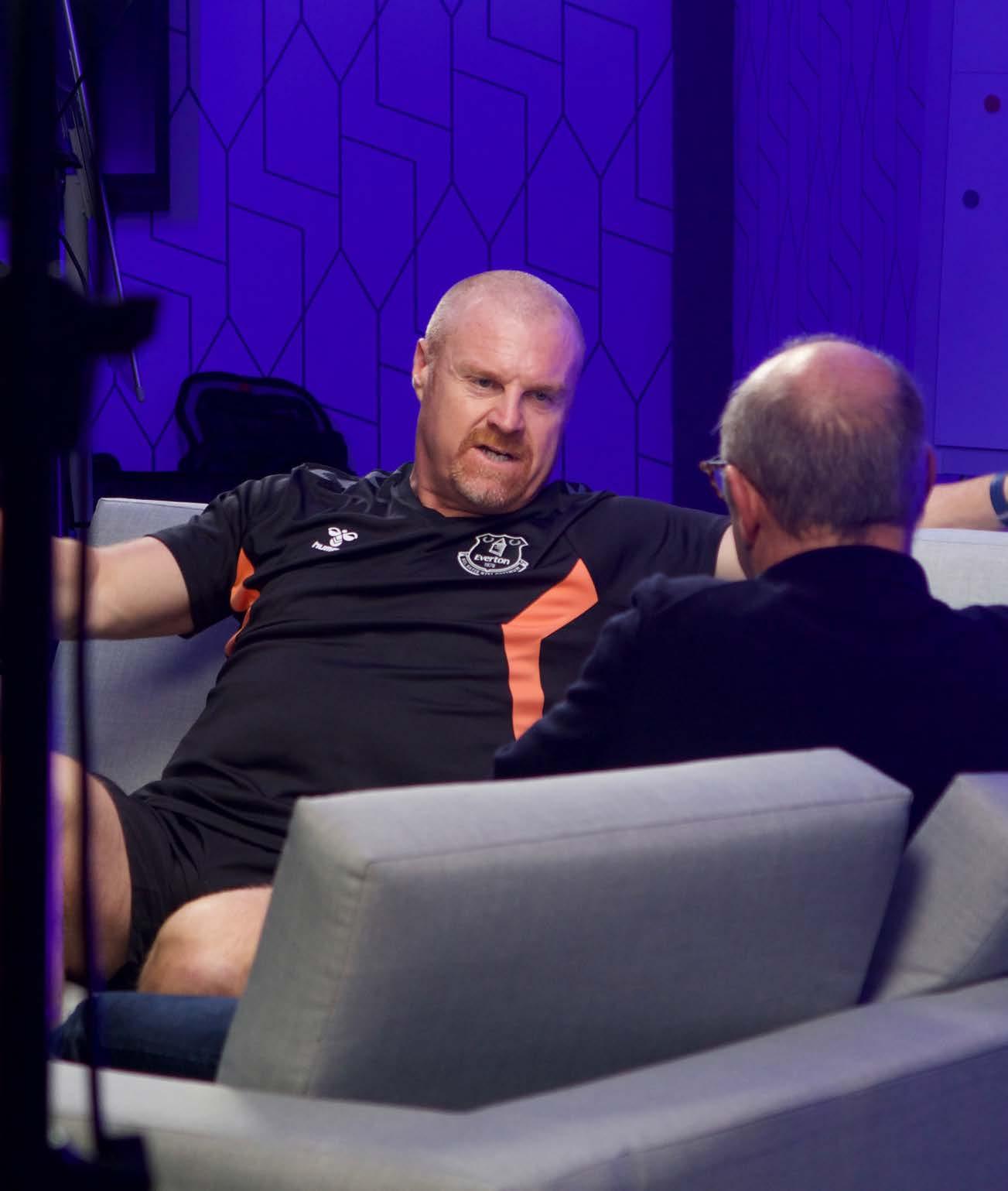
32
Everton

Everton manager Sean Dyche meets Christopher Ward’s CEO for a chat about the beautiful game – and how fostering good relationships is at the core of what he does

As the manager of Premier League club, Everton, Sean Dyche has one of the most high profile jobs in football. One of the deepest thinkers in the game, he’s known for bringing business leadership philosophies into soccer.
Thanks to Christopher Ward’s partnership with the Toffees, CW CEO Mike France was given exclusive access with Sean to talk football, family and the importance of authenticity.
Mike France: Hi Sean! You’ve brought stability to Goodison Park again. As an Evertonian that’s great to see. What’s been key to that?
Sean Dyche: I know my own skill set, I’m not flummoxed easily. Of course I feel pressure, but it’s a responsibility to do the right thing. This comes from my parents: work hard, have pride and respect others. Get the Kevlar on and let’s go!
MF: What did you do when you arrived at Everton?
SD: We needed a shared view on the ‘truth’ of this club. I call this ‘stripping it back’: respecting the past – and building the future. I grew up during Everton’s era of dominance. Since I came here, I’ve talked to legends like Joe Royle, Peter Reid and Graeme Sharp – they’ve been brilliant.
MF: It takes self-awareness to do that. Where does that come from?
SD: My dad worked his way up through British Steel, mum was a housewife who also made leather shoes – part working-class, part management class. I had two older brothers who weren’t afraid to pull me up on things, either. Old-school values. Good values. And they’ve never been more modern.
33
MF: Did family rituals help?
SD: One thing I’ve always believed in is family dinner. When I was young, you’d hear about my dad’s work situation, and my mum’s work. I didn’t know it then, but you look back and you’re learning things subliminally. When I went from player to management, I’d pick these stories out.
MF: Did you always want to be a footballer?
SD: I went to my careers officer. He said, “What do you want to be?”. Me: “Footballer”. And he said, “Yeah, alright, what do you really want to be? “Footballer.” I was pretty driven. I wasn’t brilliant academically, but I was good at life. My mates thought I was very mature.
MF: I imagine professional football was a pretty tough place in those days. Are players pampered now?
SD: I don’t think that’s the right word. Things had to move forward. The facilities here are amazing. I’d suggest modern life needs to learn that it’s not what you’ve got, it’s how you use it.
MF: Is it harder to create the team-ethic ‘feel’ than when you were captaining Chesterfield in your playing days?
SD: It’s more difficult the higher up you go as there’s more outside influence. Most players have an agent and often an under-agent. Then someone in marketing or social media. I always said about Pep Guardiola: his genius is getting 25 mini-companies to believe in the same thing. In the modern game, the agent will have a football view, and the player will say to you, “Can you speak to my agent?” And I’m sitting with them!
MF: At Everton, you can see how the team on the pitch now has a different feel. Evertonians sense something is happening. What is it about you?
SD: There’s a belief in the team. It’s not about me, it’s about them.
MF: Are you familiar with Good to Great by Jim Collins? He distilled what the elements were of a great company. When it comes to leadership, I think you’re a level-five leader – humble but with a ferocious will…
SD: I think there’s some of that. I don’t talk about what I’ve got and what I’ve done. Ferocious? I suppose in my own ways! I once read about Fortune 500 companies and they were looking for CEOs who weren’t obsessed with the company more than those that were – and would burn out. Could they find someone who wanted time with their families, could they relax and find other interests? I don’t watch every match they show on TV. To do what I do, I need to step away. I don’t mind half a lager shandy, I go to gigs. I’m into everything. I’ve seen everyone from Pink to Metallica!
MF: What’s your personal philosophy?
SD: You mould one over time. I learn about the situation first – I did that here. Being a football manager is a difficult job because everyone has an opinion. It’s one of the rare occupations where people tell you where you’re going wrong. I say to them, “What do you do?” “I’m a plumber.” “So I’ve been doing this for 37 years, and you know more
“It’s not what you’ve got, it’s how you use it”
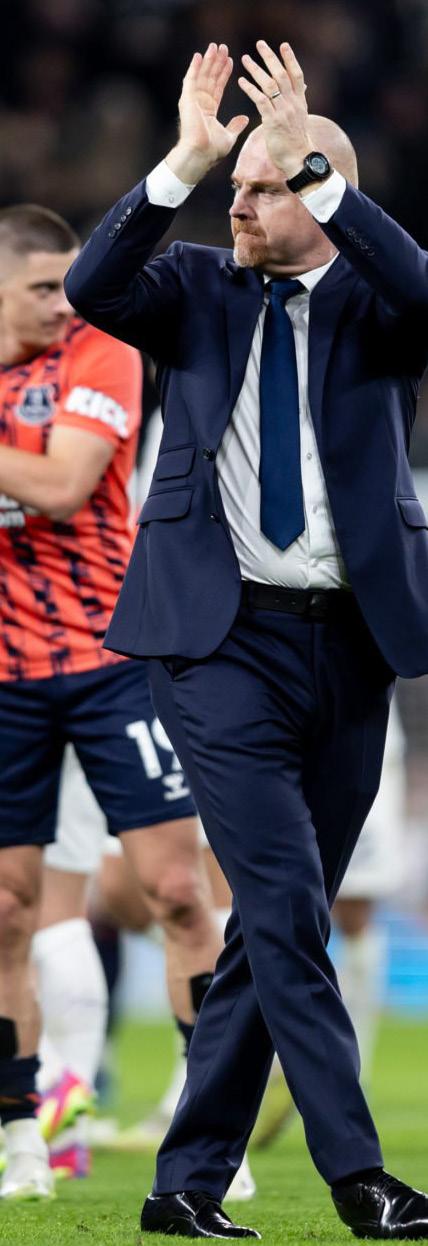
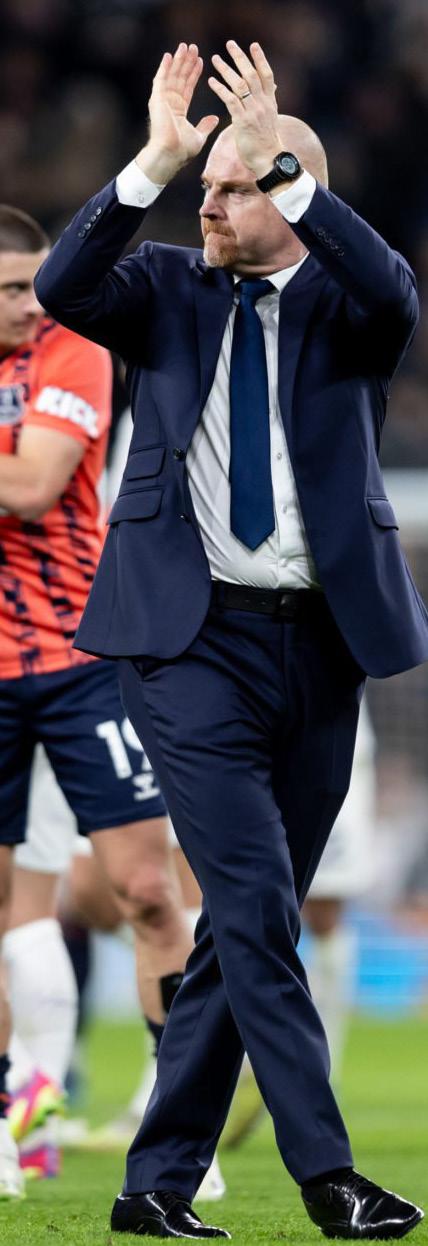
34

about this than me? If you’re fitting a boiler, do I tap you on your shoulder and say, ‘You’re doing that wrong’?”
MF: Think about the great managers of the past – like Everton’s Howard Kendall: what example can you take from them?
SD: They’re willing to lead, to make the big decisions. I remember at a LMA (League Managers’ Association) applied licence presentation, a speaker gave a definition of leadership: “Knowing what to do when you don’t know what to do.”
MF: You played under legendary Nottingham Forest manager, Brian Clough. What did you learn from him?
SD: He had the same thing. Good manners. Respect. Looking after people at the club. That generation, the manager was the leader. They made decisions you couldn’t make today. After losing, he’d give you four days off. And you’d think, why? Then you’d win the next match 3-0 –and you’d think, that’s why.
MF: You’re managing one of the Top 20 clubs in world football. Where do you go from here?
SD: There’s so much to do here. The first job was to stay in the Premier League. But that’s a step – we’ve got miles to go. My biggest success here might be calming, organising, structuring, remodelling and then they go, “Thanks for that, it’s time for a different version.” That’s how I look at business. My dad says, “Different manag-

ers manage different things. Your management skills won’t fit everyone forever.”
MF: You're quite sanguine about it?
SD: You have to be. Otherwise you’d drive yourself mad.
MF: Finally, how do you sum up what you’re trying to do?
SD: How do I make you, a player, and 20 others – plus the staff – see what’s inside my head? Simplicity is the best one – chunk it down into pieces. Trust their skill set to absorb and then deliver it. I find too much information can be confusing. Give them enough, but not too much. We’re talking about football here, not brain surgery!
35
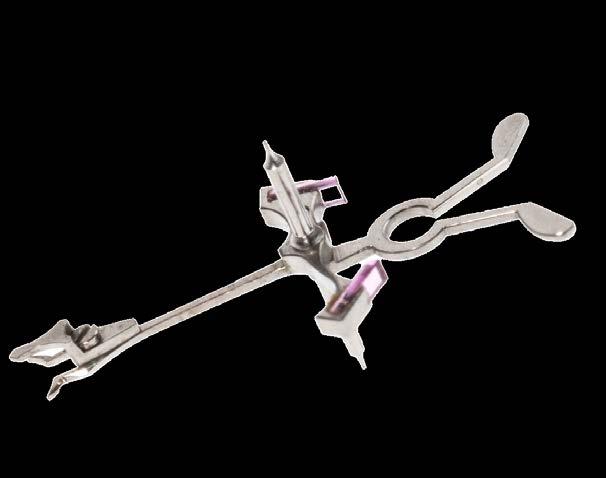
The British watch industry has grown over the last 20 years, but does it have a global presence?
Laura McCreddieDoak finds out


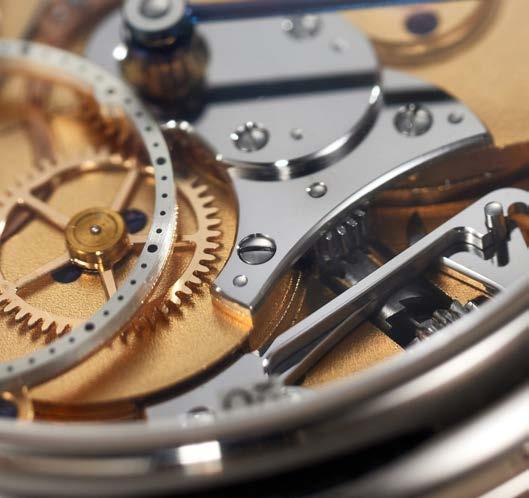
36 UK watchmaking

tick
Twenty years ago, when Mike France, Peter Ellis and Chris Ward started the conversation that would lead to a watch brand named after the latter, there really wasn’t a British watch industry to get excited about. It was a landscape of individuals such as Roger W. Smith or Robert Loomes, singular men steeped in traditional crafts making minimal amounts of watches for the privileged few.
What a difference two decades makes. A 2021 survey commissioned by the Alliance of British Watch and Clock Makers and undertaken by KPMG found over 100 watch brands and watch-related businesses in the UK producing around one million watches or clocks.
The UK has form here. In the mid1600s, Brit Ahasuerus Fromanteel made the first-ever pendulum clock and, for his sins, was patronised by Oliver Cromwell. Decades later, Thomas Tompion –generally known as the father of English clockmaking – teamed up with inventor, scientist, physicist and inventor of the balance spring, Robert Hooke, and in a heady combination of horology and science effectively kickstarted the golden age of English clockmaking; a reputation that
37
“British watch brands distinguish themselves through a steadfast commitment to heritage, craftsmanship, and storytelling”
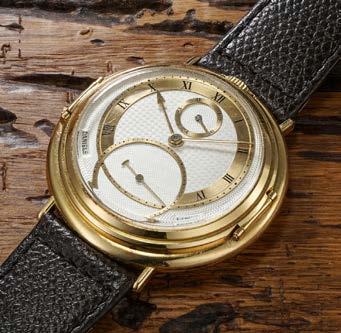
was cemented in 1714 when John Harrison won the Longitude Prize.
By 1800, Britain was producing 200,000 watches a year as well as exporting horological inventions such as Thomas Mudge’s lever escapement and Tompion’s cylinder version across Europe and even as far as Russia and China. As is often the case, complacency, aided by war and economic downfall, led to collapse and, by the 1970s it was all gone aside from the self-taught mavericks the likes of George Daniels and Derek Pratt.
Things have changed in the intervening years, with brands openly talking up their Britishness, but is there really a scene; one that can compete on the global stage with a reputation that sets it apart?
George Bamford, founder of Bamford Watch Department, thinks there is.
“A seminal moment was Christopher Ward winning the Petite Aiguille prize at the GPHG awards with the Bel Canto against the Swiss watch brands,” he says. “This was a real eye-opener for the rest of the world to see how amazing British watchmaking is.”

38
Studio Underd0g 02SERIES
George Daniels Spring Case Tourbillon


He’s not wrong. Seeing a UK brand take on the likes of Bulgari and Tudor, who were both nominated in the Petite Aiguille category, and win, was a wonderful moment, but the GPHG is an industry event, and, unlike the Oscars, not something promoted to those outside the watch world. However, there are signs that Brits are gaining recognition in a wider context; but not necessarily on home soil, as Giles Ellis, owner of Sussex’s Schofield Watch Company observes: “I think the scene is better understood from abroad,” he says. “By those that look at us as a collective. Many American owners of Schofield may also have a Pinion or Vertex, a Christopher Ward or Fears.”
For Fears’ fourth-generation managing director Nicholas Bowman-Scargill, just being British isn’t enough. “Some believed that coming from the UK is all you need to get people to take notice, which isn’t right,” he says. “Being a British watch company does give you a point of difference but it’s what you do that makes it relevant.”
But what can be leveraged out of the British ‘brand’? It’s complicated. Whereas Switzerland has an infrastructure that allows brands to claim they are ‘Swiss made’ – a phrase synonymous with quality and pedigree – few UK brands can claim that. Even Bremont, with its new manufacturing facility, The Wing, still relies on parts from other countries because we don’t have the ecosystem here.
Brands based in Britain, according to the 2021 KPMG survey, would like to invest in home-grown businesses but the suppliers who meet the requisite demands of cost and quality aren’t available. There’s also the accusations of ‘Brit-washing’.
If companies that are registered in the UK promote themselves as British, there are bound to be mutterings from purists who are keen to point out where they manufacture and where the parts come from. It doesn’t matter that the majority of the design happens in the UK and therefore the IP is British, the pedantic view is if you’re not making or assembling here, you’re not British.
“We totally reject this,” says William Brackfield, designer at Christopher Ward. “Our aesthetic ethos – as well as the philosophy of our brand – is British. The way we mix tradition and modernity, and our ability to innovate at speed could only have come from the UK. We have a point to prove!”
Maybe we’re looking at this all wrong. Perhaps the idea shouldn’t be creating a British watchmaking scene that competes with the Swiss but rather forging an identity that is recognised globally without the pressure to compete on that scale or a reliance on a pedantic definition of what a British brand actually is. Just as, after the once world-renowned UK watchmaking industry disappeared in the 1970s, we relied on those self-taught mavericks to keep the candle burning, we should be looking to their 21st century compatriots – think Studio Underd0g, Struthers, Fears, and Schofield.
As Bowman-Scargill says, “British watch brands distinguish themselves through a steadfast commitment to heritage, craftsmanship, and storytelling.”
For Peter Ellis, co-founder of Chistopher Ward, the success of CW, Bremont and other brands is genuine and should be celebrated. “Events like British Watchmakers’ Day show how far the industry has come and how deep the foundations are. There’s no reason why UK horology can’t take its place at watchmaking’s top table once again – the world is watching!”
39
Above: The Fears Garrick; Above-right: Bremont’s The Wing

A different


40

How Christopher Ward’s five-day Calibre SH21 movement changed the company’s fortunes for good
Charlotte Street is perhaps the most ‘European’ street in central London.
Formerly known as ‘medialand’ – due to the road’s abundance of advertising agencies – it’s lined with trees, cute shops and restaurants of every stripe. The road’s most famous venue is the Charlotte Street Hotel. Beloved by gossiping journalists, celebrities and fashionable tourists, it’s one of the most charming places to people-watch in town.
But if you’d walked into the Charlotte Street Hotel on a sunny day in July 2014, you’d have seen something else: a group of well-dressed men and women assembling into a function room in the basement.
Representing every part of the watch industry – bloggers, manufacturers, PR people – the crowd were there for something special: the launch of Christopher Ward’s Calibre SH21, the first in-house mechanical watch movement by a British brand in 50 years.
The reaction was one of disbelief, admiration and undisguised jealousy. Later, the head of one prestigious Swiss watch brand asked a CW director: “What gives you the right to do this?”
Calibre SH21 was – and is – no ordinary watch movement. The brainchild of CW’s former master watchmaker Johannes Jahnke, its ingenious twin-barrel construction delivers 120 hours of timekeeping when fully wound. It’s also a certified chronometer, putting it in the top six percent of all Swiss movements for accuracy.
The goal was that SH21, which contains 164 separate parts, would be used on Christopher Ward’s most prestigious watches. And, because of how it was designed, it could also host further compilations.
41
As Mike France says: “When we launched Calibre SH21 in July 2014, we built it on three foundations. First, to deliver a highly accurate, COSC-certified movement. Second, to give our customers a five-day power reserve in a series of exquisite watches; and third, to provide a canvas for our watchmakers to display their skills and imagination.”
In the decade since its launch, SH21 has been used in timepieces that go from the classic and elegant (the C9 5 Day Automatic) to the astounding and ambitious (the C7 Apex). And you’ll see a lot more of it over the coming years.
But for now, let’s celebrate a decade of our in-house movement with five of our favourite Calibre SH21 watches.

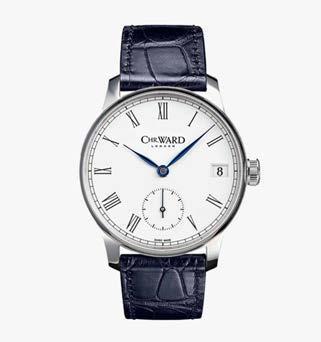
C9 5 Day Automatic
Released in 2014, the C9 5 Day Automatic was the first CW watch to house Calibre SH21. An elegant dress piece that combines classic English design with a surgical-grade stainless steel 40mm case, the understated, concise dial design boasts raised nickel indexes and Roman numerals at 12 and 6 o’clock. The sculpted precision hands provide extra visual interest.
C9 5 Day Small Seconds
While the first SH21 watch was an automatic, for this 2015 release, the teams in the UK and Switzerland created a classical ‘marine chronometer’ with a hand-wound movement. The use of Roman numerals and the small seconds subdial point to a timepiece influenced by centuries of British horological history. The watch was created to celebrate one year of Calibre SH21.
Since its launch, SH21 has been used in timepieces that go from classic and elegant to astounding and ambitious

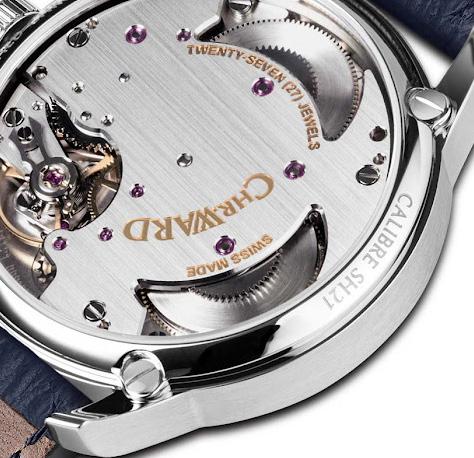
42


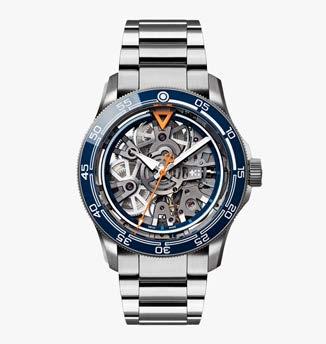
C8 Power Reserve Chronometer
The C8 Power Reserve Chronometer is an homage to British aviation timepieces like the Smith’s Mk II A clock. Launched in 2016, and powered by a hand-wound version of SH21, its two-layer dial shows the capabilities of the movement with a power reserve indicator sub-dial at 9 o’clock. Plus, a small seconds sub-dial at 6, and altimeter-inspired, double-layered date calendar at 3 –with laser-cut numerals. The case back has an intricately worked new bridge, which shows off SH21’s twin barrels, both of which are engraved with a wind turbine motif.

C7 Apex
The C7 Apex, released in 2018 as part of our Motorsport Collection, broke new ground for Christopher Ward. The first CW watch with a semi-open dial, and powered by a hand-wound version of Calibre SH21, the Apex brought complex levels of finishing together with a near-industrial aesthetic. Note how the raised powerreserve indicator is finished in a combination of red, black and steel detailing, while
C60 Concept
Crafted in titanium, Christopher Ward’s first ‘fully skeletonised’ watch is a tribute to the power and beauty of Calibre SH21. To create a watch with this level of finishing, CW brought in experts from elite watchmaker Armin Strom, component manufacturer Xenoprint and boutique horologists, Chronode (whose technicians spent six hours polishing the chamfered edges of each bridge). In the words of senior designer, Adrian Buchmann: “Everything has to be exquisite, because there’s nowhere to hide.”


43
Culture that’s worthy of your time

photos Stock
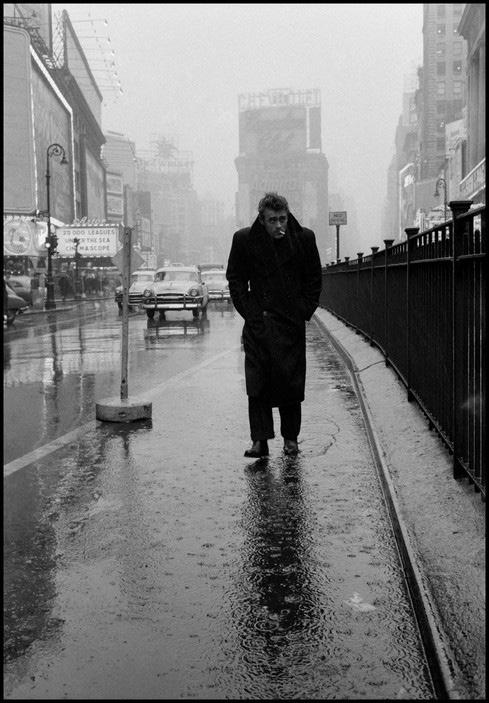
The glorious, glamorous weirdness of mid-century America is brought to life in a collection of iconic images from photographer Dennis Stock
If anyone could claim to be the inhouse photographer of the American century, Dennis Stock would be in with a strong shout.
Born in New York City in 1928, Stock secured an apprenticeship with Life magazine photographer Gjon Mili – and won first prize in its Young Photographers contest. He joined the Magnum photo agency in 1952.
His most celebrated monochrome images from 1950-to-1970 have been put together in a new anthology, American Cool. Here, you’ll find the most iconic pictures of James Dean (whom he developed a strong friendship with), Miles Davis, Audrey Hepburn, JFK on the campaign trail – and many more.
But it’s the images of ordinary (and extraordinary) Americans that have the most impact. Over 20 years, we see a population go from all-American conformity to late-’60s weirdness in all its flares-andflower-power glory. The theme of how the counterculture became the culture runs through all his photos.
Stock once said, “Every picture should be a masterpiece,” and looking at the images from American Cool, there’s no doubt he lived up to his word.
American Cool is published by Reel Art Press, priced £45, reelartpress.com
44
© Dennis Stock / Magnum Photos The photobook

The symphony Symphony No. 9 by Ludwig van Beethoven
If you know a little about classical music you’ll be familiar with Ludwig van Beethoven’s Symphony No 9 – and its most famous movement, Ode to Joy, the official anthem of the European Union, and more importantly, the Eurovision Song Contest.
It’s 200 years since the work premiered on May 7th 1824, in Vienna. On the night, it was conducted by Michael Umlauf as Beethoven was now profoundly deaf. Such was the power of Ode to Joy that it received five standing ovations, which Beethoven – sitting in the front row – had to turn around to witness, as he couldn’t hear anything.
Divided into four parts – with the choir coming in toward the end – the words to Ode to Joy are based on a poem written by Friedrich Schiller. Beethoven adapted Schiller’s words, which celebrates the universal brotherhood of humanity, and crafted a series of melodies and textures around them.
Thanks to its theme of universalism (and hummable melody), Ode to Joy has been used by leaders, organisations and governments worldwide to bring people together (Stalin wanted it played in every village in the USSR). Though it’s not been universally popular: China’s infamous Gang of Four hardliners banned Beethoven altogether. Which would probably be music to Ludwig’s ears.
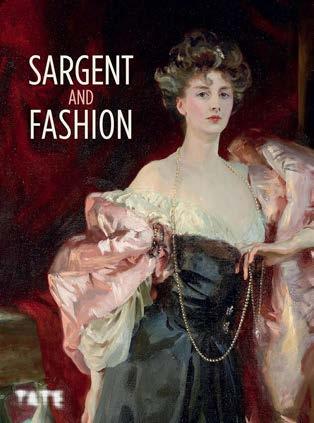
The exhibition
Sargent & Fashion, Tate Britain, London
When we think of impressionism, post-impressionism and the triumph of light and colour in art, we think of French painters like Renoir, Matisse and Pissarro.
But one of the era's heroes is a painter born to American parents in Italy in 1856: John Singer Sargent. Under the tutelage of Carolus-Duran, he painted alla prima –applying paint to the canvas directly without careful underpainting. This technique gives his portraits and landscapes a free, natural look similar to Degas or Monet.
Now, London's Tate Britain is hosting Sargent & Fashion, an exhibition devoted to his most stylish portraits. The gallery says: “Sargent used fashion as a powerful tool to express identity and personality and regularly chose the outfits of his collaborators or manipulated their clothing.”
Which makes this exhibition a draw for both art-lovers and style warriors.
Sargent & Fashion is at Tate Britain until July 7th
45

In the first essay of a two-part series on horological history, Ken Kessler looks back on the mechanical watch revival and how it survived the coming of quartz
46
Column
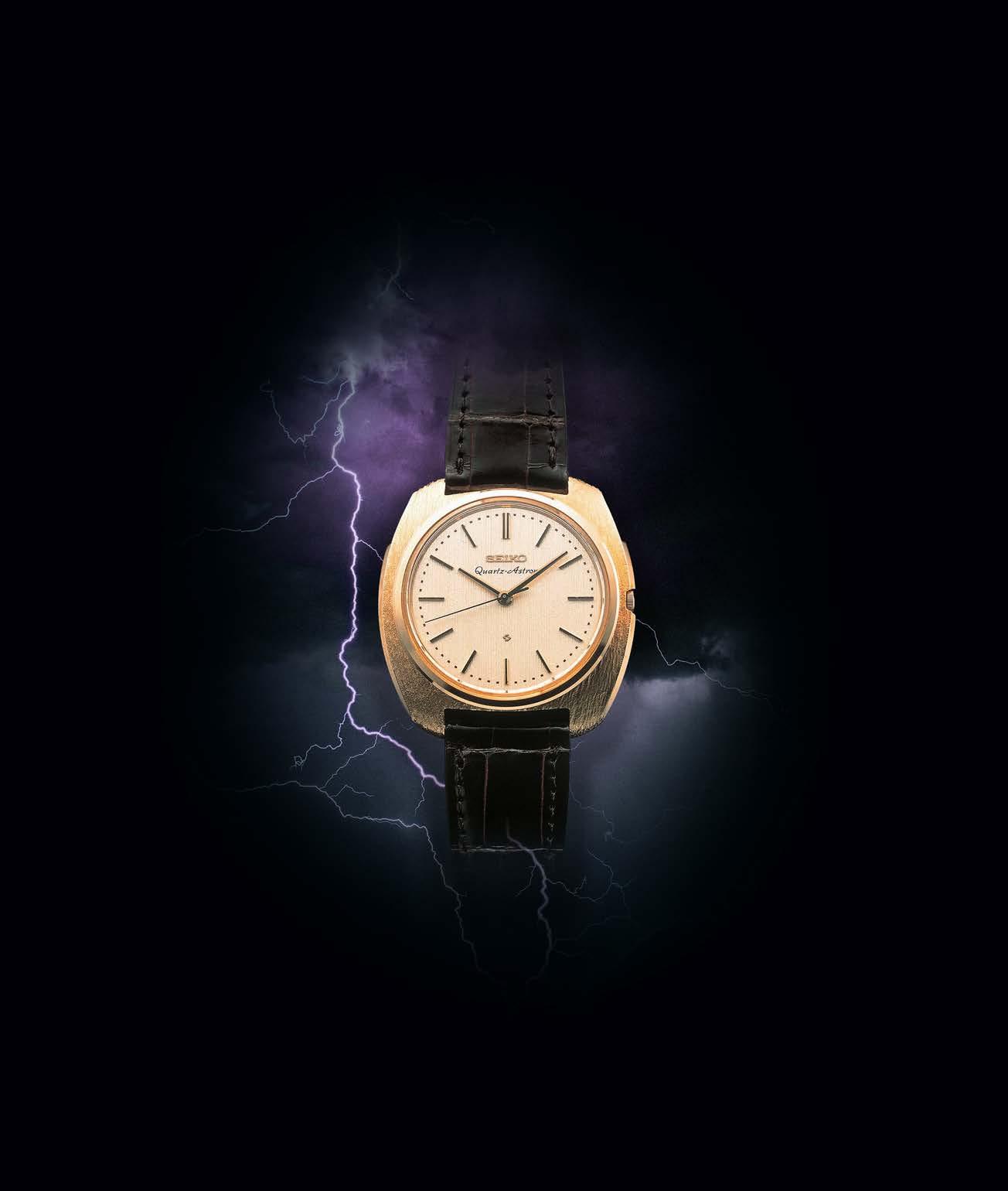
47
Little in life happens in a vacuum, and – aside from the Big Bang, perhaps – few developments are the result of pure spontaneity. In order to appreciate the last 20 years of the changes in the world of watches, the period since Christopher Ward sold its first pieces, you need to look at the previous 30. Everything you think you know about the watch scene today starts with what we now call ‘The Quartz Crisis’.
That cataclysmic event began in 1969 with the first commercially-available quartz watch. This is attributed to the Seiko Astron 35SQ, which was followed by the Swiss response in 1970, the Omega Beta 21. It isn’t too much of a stretch to think that the two were developed concurrently, just as it was no accident that three rival forces created the automatic chronograph in the same year. Only a conspiracy theorist would hint at collaboration, but it’s doubtful that the Swiss came up with the Beta 21 from scratch in under a year.
Why was quartz the cause of a crisis for the mechanical watch industry? Neither the greater accuracy of quartz nor the lower prices affected the serious or luxury watch sectors. The reality was that the Japanese manufacturers could deliver quartz watches at mass-market prices which their Swiss, German, French or US simply rivals could not. Despite the swift arrival of the Beta 21 movement supported by a number of brands, the huge watch companies of the United States and the more upmarket maisons of Switzerland were taken almost completely by surprise.
Among the more chilling episodes in watch lore when ‘the crisis’ is discussed are tales of watch brands dumping tools and movements into Lake Geneva. As apocryphal as this may sound, there was much truth to it – an incredibly short-sighted response by the watch business. This was the collateral damage caused by manufacturers in the United States and Switzerland being decimated. Indeed, USbased watch manufacturing no longer exists except for the tiny niche producers. Yankee giants such as Hamilton and Timex moved offshore, in Hamilton’s case to Switzerland.
By what magic it occurred, I do not know even though I was present at the time, as I was buying and selling vintage watches as far back as 1979. Unbeknown to me, as there was no watch community as exist today – no magazines, no internet, few books and not even wristwatch-only auctions – a backlash against quartz was taking place at street level. This groundswell of support for mechanical watches emerged almost simultaneously with their near-disappearance.
The huge watch companies were taken completely by surprise
To reassert that nothing happens in a vacuum, this backlash was a global movement even though unassisted by the instant communication we know today. Instead, it was a ‘perfect storm’ that arguably began with the very watchmakers who knew not to abandon mechanical timepieces.
While it's true that in the 1960s Bulova had produced a hugely successful electric watch, the Accutron, and Elgin and Hamilton had issued less successful electric watches in the 1950s, affordable timepieces for the most part remained mechanical until quartz arrived. Seemingly overnight, then, the mechanical wristwatch had been rendered redundant. This also tells you that ‘watch culture’, our now-established hunger for fine mechanical timepieces, was yet to form.
They are now industry legends, such as the late Günter Blümlein, who saved IWC and other brands, and who revived A. Lange & Söhne. Master watchmaker Gerd-R. Lang, formerly of Heuer, founded Chronoswiss as far back as 1983, precisely to keep mechanical watches alive. Among his actions (and he was not alone in this), Lang rescued tens of thousands of movements from destruction. Forty years later, they form the heart of a brand formed in his memory: Lang 1943.
Above all of this was the colossus now known as the Swatch Group. Although its name celebrates the antithesis of mechanical watches, the affordable Swatch – then quartz-only – saved the Swiss watch industry,
48
while the group rescued Tissot, Certina, Longines, Omega and others. The Swatch Group would be joined by other multi-brand corporations including Kering, LVMH and the Richemont Group, all providers of horological salvation.
As Lang and his fellow watchmakers realised, the past must not be forgotten. On a less intellectual level, they also knew that there were millions of mechanical watches out there that were too good to be discarded and which would eventually need servicing. It wasn’t just the movements and spare parts that were required: watchmakers were necessary, too. And while we’re only just enjoying the fruits of their labours in training or encouraging a new wave of young, highly skilled watchmakers, it must be recalled that for at least two decades, precious few were being taught – and it takes as long to become a master watchmaker as it does a brain surgeon.
Further fuelling the passion for mechanical watches prior to the arrival of websites were assorted, seemingly unrelated phenomena: interest in buying and collecting pre-owned watches, the arrival of watch magazines, the coming of the new wave of ‘auteur’ watchmakers and more. These gave rise to specialist dealers in vintage timepieces and wristwatch-only auctions, while the new brands would focus on complications, exclusivity, and artisan values. And none could have happened without the others.
It was the rise of the collectors and enthusiasts which enabled everything we now understand about the watch world. They were the buyers who were not charmed by quartz watches and who, at that time, were relegated to buying the few new mechanical watches that survived the crisis. Rolex, Patek Philippe, Vacheron Constantin, Audemars Piguet, IWC, Breitling and a number of other established brands never abandoned mechanical watches, though they may have flirted with quartz.
From the mid-1980s onwards, the young watchmakers who learned their craft before quartz arrived suddenly found themselves employable only as restorers or repairers. In the 1980s and early 1990s, watchmakers of the calibre of Gerd-R. Lang, Franck Muller, Daniel Roth, Svend Andersen, Antoine Prezioso, F.P. Journe, Roger Dubuis, Philippe Dufour, Michel Parmigiani and a handful of others founded their own, usually eponymous brands. These post-crisis houses are now over 25 years old, having acquired longevity and provenance.
Watchmakers were employable only as restorers or repairers
Prior to the 1980s, if you said “watch auction”, it meant pocket watches. Wristwatches had not been taken seriously up to that point. ‘Tool’ watches from Rolex, Heuer, Breitling and the rest sold precisely to the people who needed them for their particular occupations: divers bought diving watches, pilots bought pilots’ watches, engineers and sportsmen bought chronographs.
As for luxury watches, the high-end trio of Patek Philippe, Audemars Piguet and Vacheron Constantin, and the fashion leaders of Cartier, Piaget and Chopard, though now aspirational, were barely known outside of a coterie of wealthy people. The rest of us bought a single watch to serve the most basic of functions: telling the time.
While these forces created the foundation for the recovery of the mechanical wristwatch, another crucial phenomenon also occurred: the revival of seemingly dead brands. From being lost in the midst of time, Breguet, Blancpain, Daniel JeanRichard and many others were resuscitated. Longestablished extant brands that had survived the Crisis but which seemed to dwell below the radar were again in demand, from Doxa to Glycine to Panerai. The hunger for watches was enjoying a near-vertical trajectory.
But it wasn’t all about high-end timepieces nor even all about the Swiss. As you’ll find out in part two.
In the next issue, Ken describes the vintage scene, the pre-owned sector, the internet, and the revival of British watchmaking
49
Warren Buffett
When it comes to watches, the world’s top investor plays the long game
Warren Buffett is in a league of his own. As the head of Berkshire Hathaway and one of the world’s wealthiest men, Buffett has made his fortune by only investing in companies whose products he admires and holding stock for decades.
He’s famously a man of simple tastes. Buffett drives a 2014 Cadillac XTS, lives in the same five-bedroom house in Omaha he bought in 1958 for $31,500 – and eats at the same restaurant he’s been going to for years. (Gorat’s Steak House: Buffett has the $9 steak sandwich).
Warren Buffett was born in Omaha, Nebraska, in 1930. His parents, Howard, an investor, and Leila, a politician, raised him as a modest-living Presbyterian. Demonstrating an early knack for business, by the time he was 11, he’d made his first investments. At 13, he produced a betting tip sheet he delivered around the neighbourhood. And at 14, he bought a 40-acre farm. He became a millionaire in 1962.
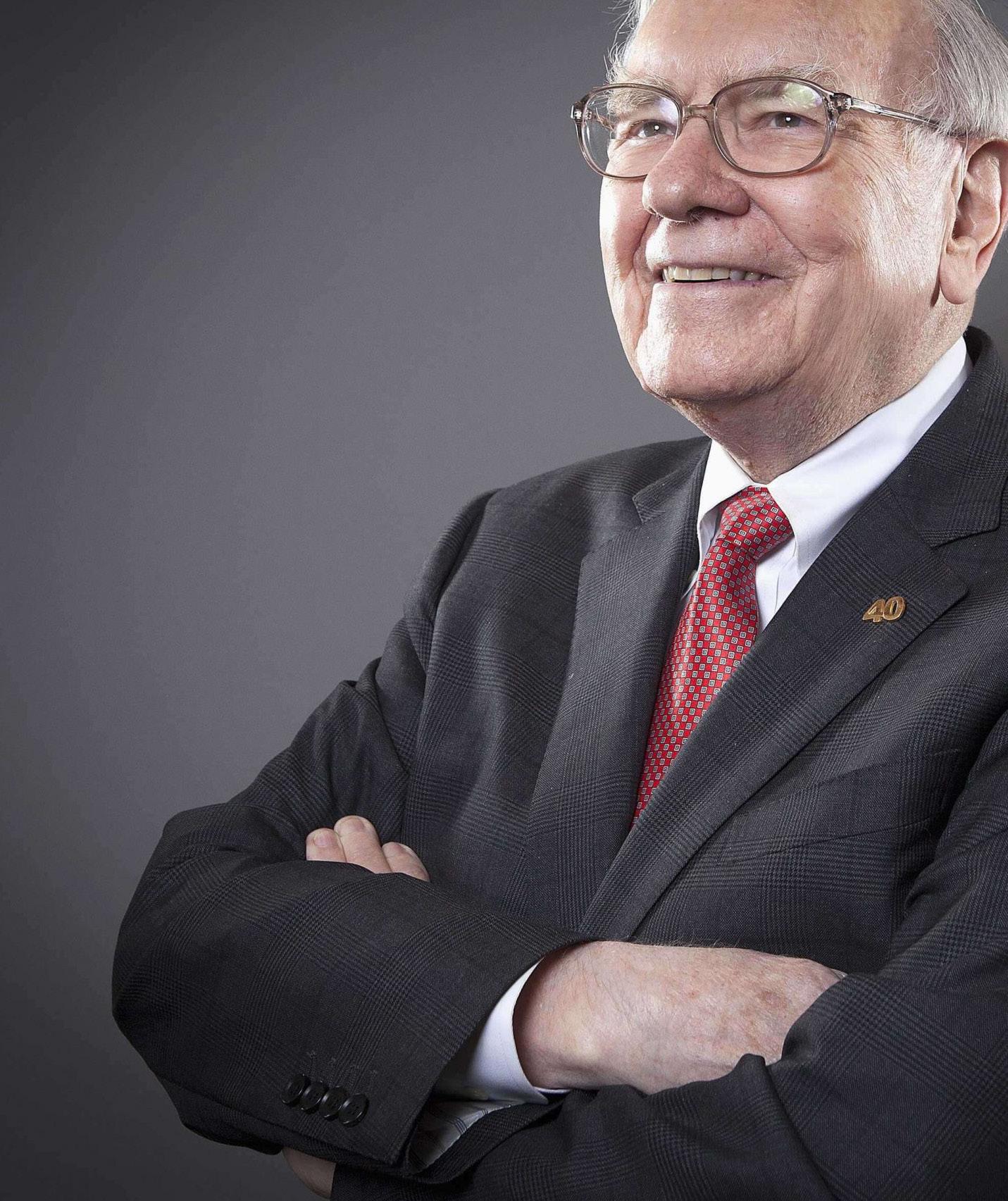
As someone who places great importance on long-term value, it’s unsurprising Buffett has owned the same watch for decades: an 18-carat gold Rolex Day Date ‘President’ (Ref. 18038 or 18238). While it might seem a little showy for a man who describes his
taste in beaten-up, second-hand cars as “embarrassing”, the thinking behind the purchase makes sense.
While the watch is undoubtedly luxurious – witness the silver dial and fluted bezel – its main attraction is its reliability, durability and classic design. Released in 1956 as the ‘Rolex Day-Date’, it was the first watch to display the day’s name in full (at the 12 o’clock position) and has only ever been made of precious metals – either in solid gold or platinum.
The ‘President’ nickname came thanks to its adoption by the likes of Lyndon B. Johnson, Ronald Reagan and Dwight D. Eisenhower (though it’s also the official name of the bracelet). It’s powered by Rolex’s inhouse Calibre 3255 and is waterproof to 100m. The watch has obviously made a favourable impression on Buffett. As befitting someone who only invests in businesses he believes in, he once let Rolex know he’d be interested in acquiring the company. The Swiss giant, owned by a charitable trust, the Hans Wilsdorf Foundation, politely declined.

Which, when you consider it, is exactly the sort of response the ‘Oracle of Omaha’ would approve of.
Great watch-wearers
Everywatch™
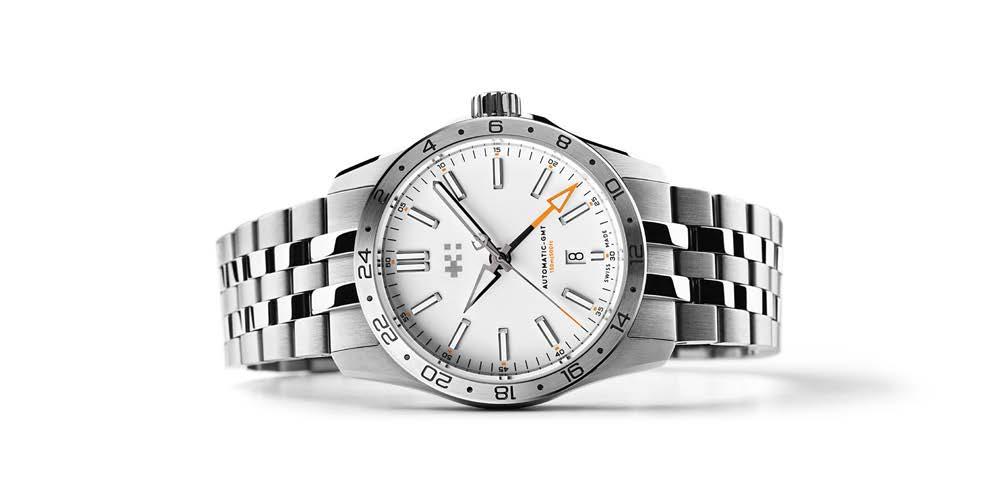
We designed the Sealander to do-anything and go-everywhere. With this new 36mm GMT, the range now offers an anytime watch for everyone. Its perfectly proportioned, Lightcatcher™ (another trademark) case protects a precision Sellita SW 330-2 Swiss movement, with 56 hours power reserve and dual time functionality. It sports highly legible, highly luminous indices and hands, contrasted against a black, white or dragonfly blue dial. Each Sealander is available on a wide selection of quick-release straps. Or you can opt for either our Bader Bracelet™ or Consort Bracelet™ (yup, more trademarks) or both. Neatly (and nattily) bringing us to its other complication: which Everywatch™? Do your research.
christopherward.com


CUSTOMER NUMBER
The Twelve X, pg 12.























































































